DevFest Kaliningrad-2015: photo report
On December 12, all Kaliningrad fans of Google technologies came together to meet, listen to guest speakers, and exchange ideas and knowledge.

At the conference there were about 300 participants, speakers from Kaliningrad, Moscow, St. Petersburg and Voronezh. The organizers were the GDG-community of the city and the Chemical-Biological Institute of the IKBFU Kant, with the active participation of SmartHub .
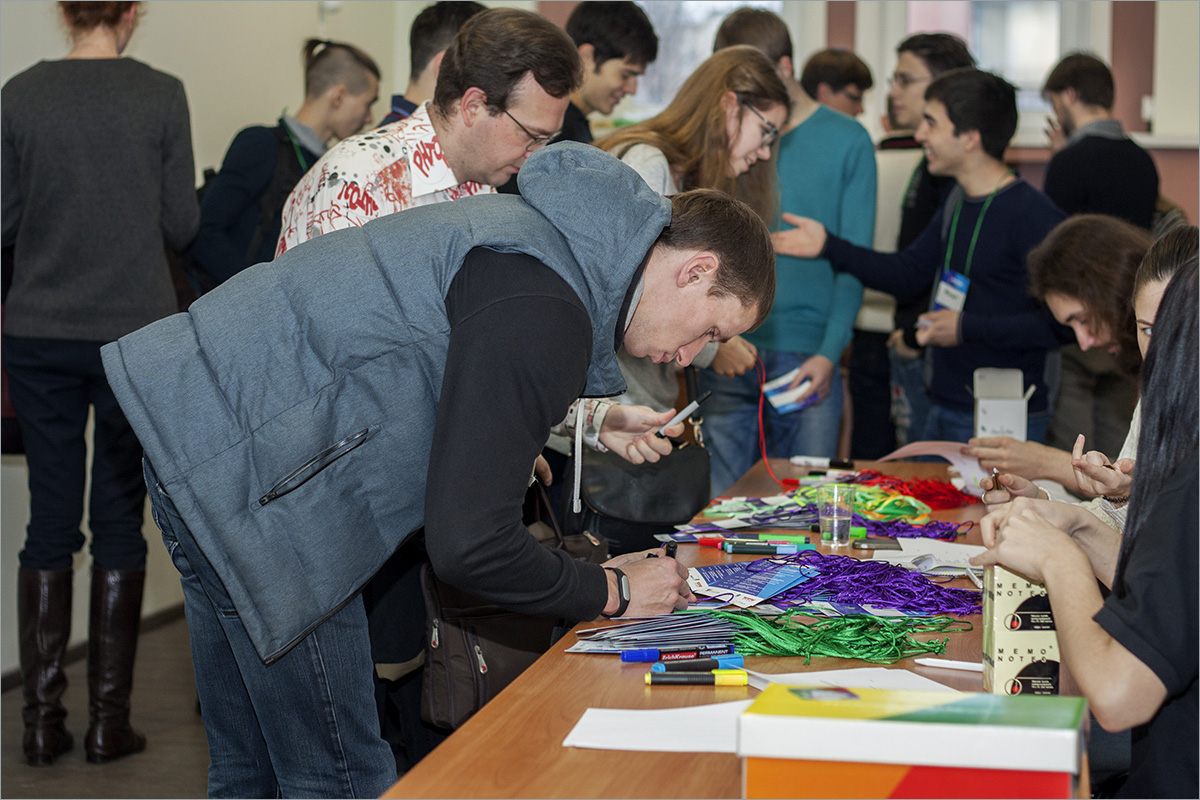

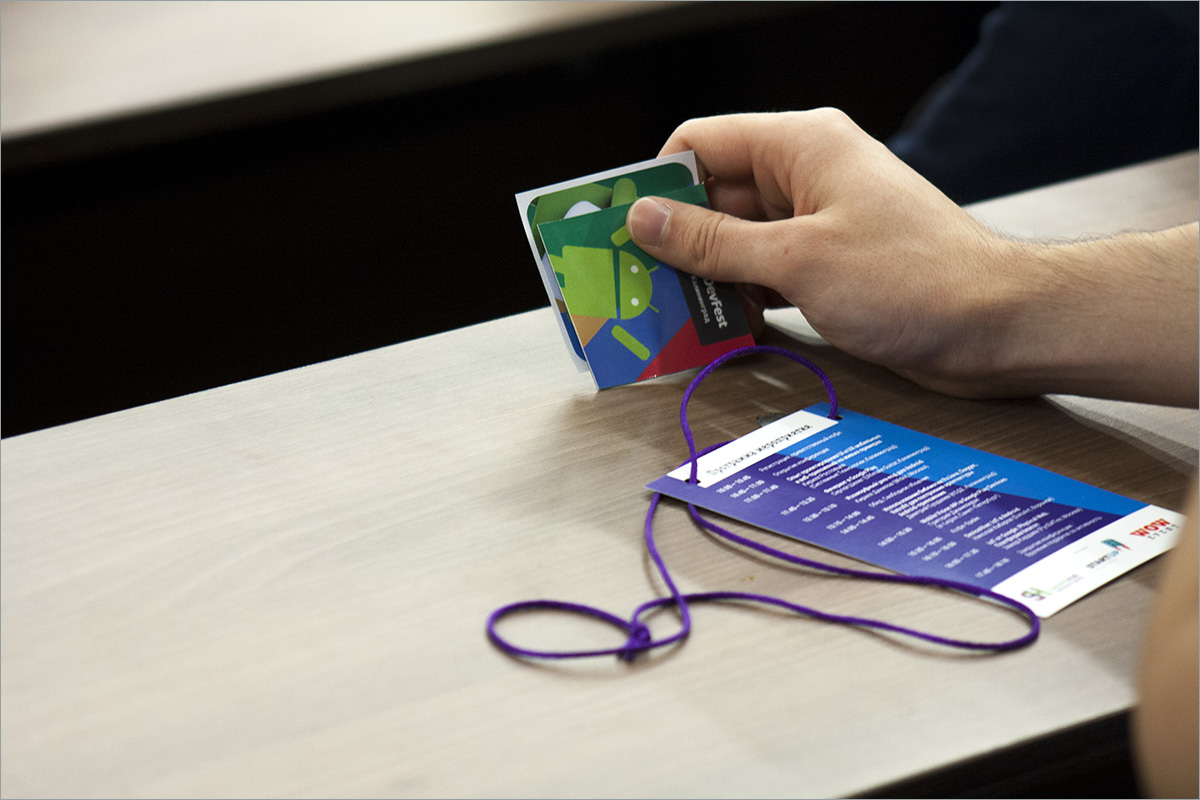
All participants were waiting for souvenirs from Google and the conference partners.

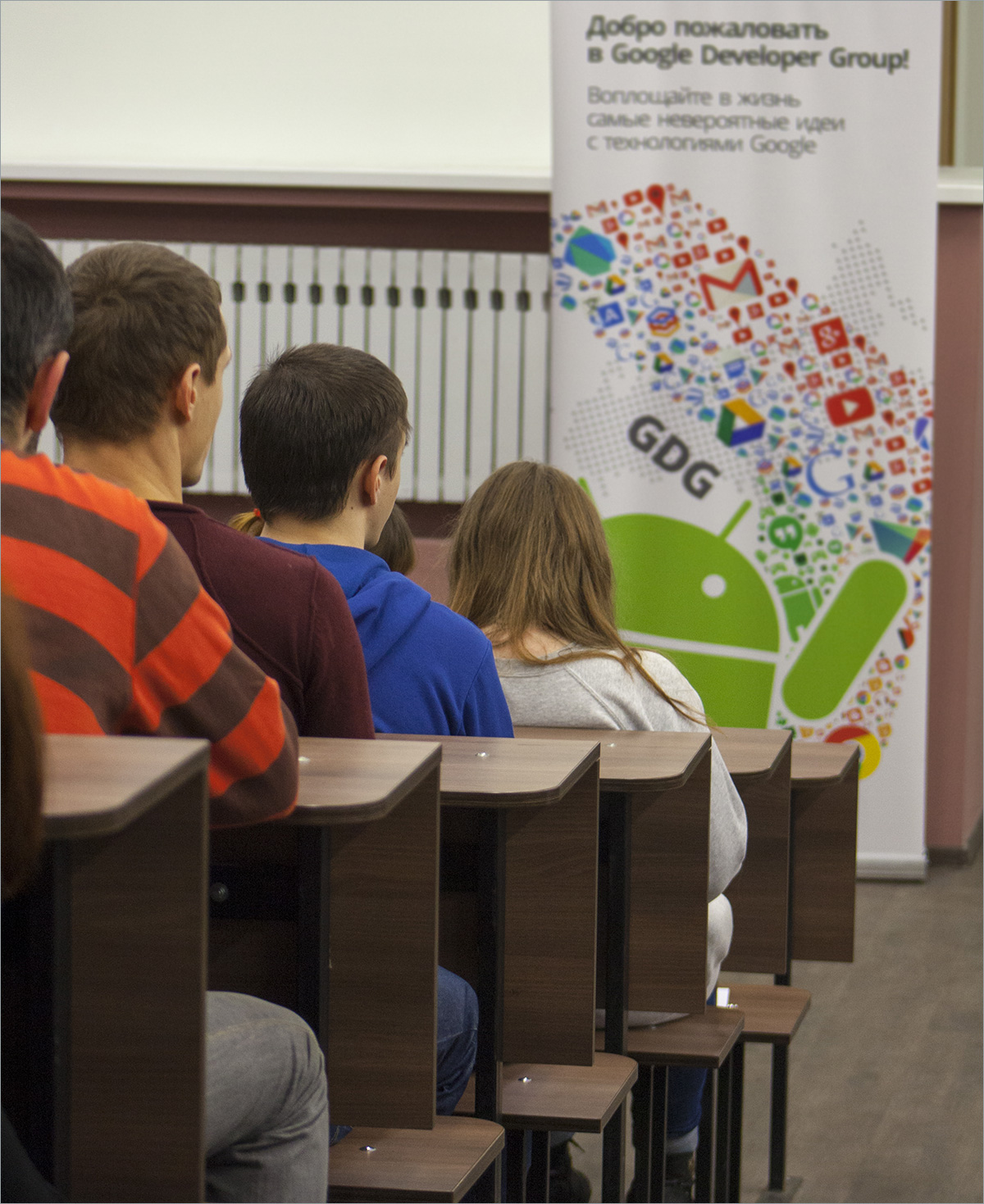

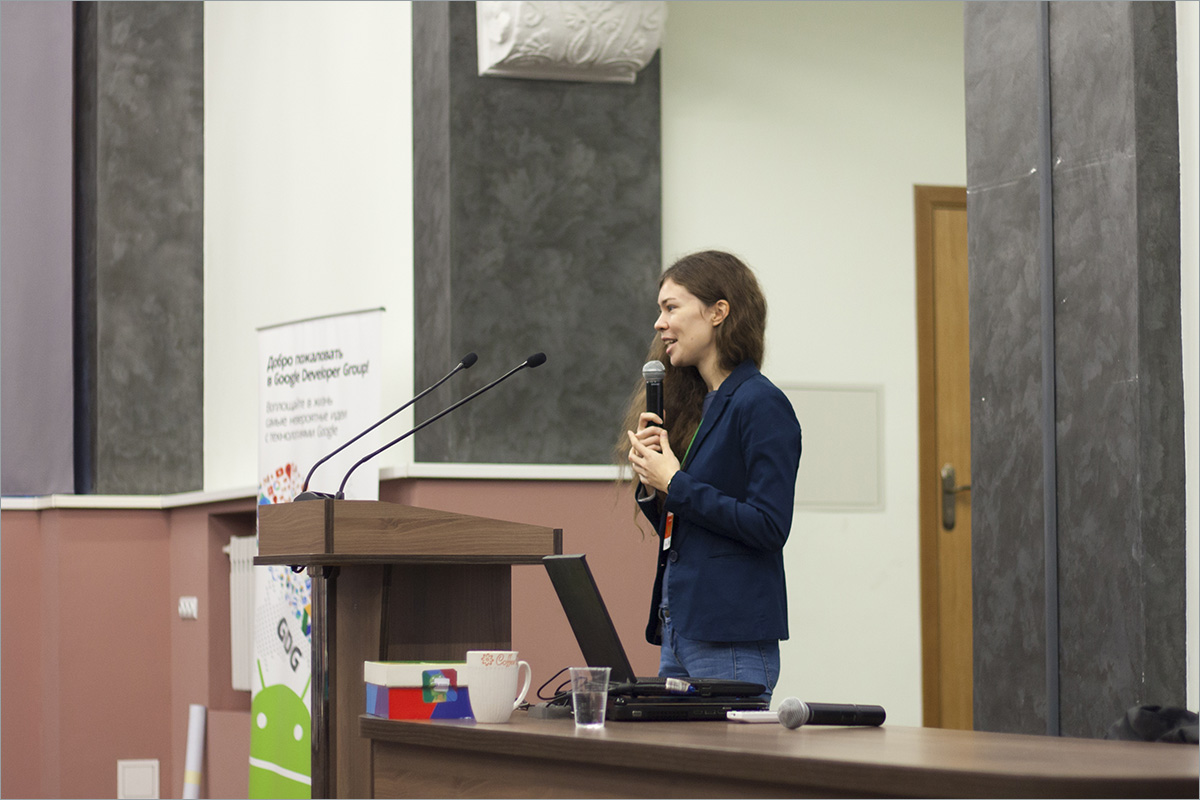
After welcoming remarks, they passed from the organizers to the speakers. All reports and speaker presentations can be found here .
The first to speak was Kirill Rostovtsev, an interface designer for System Technologies.
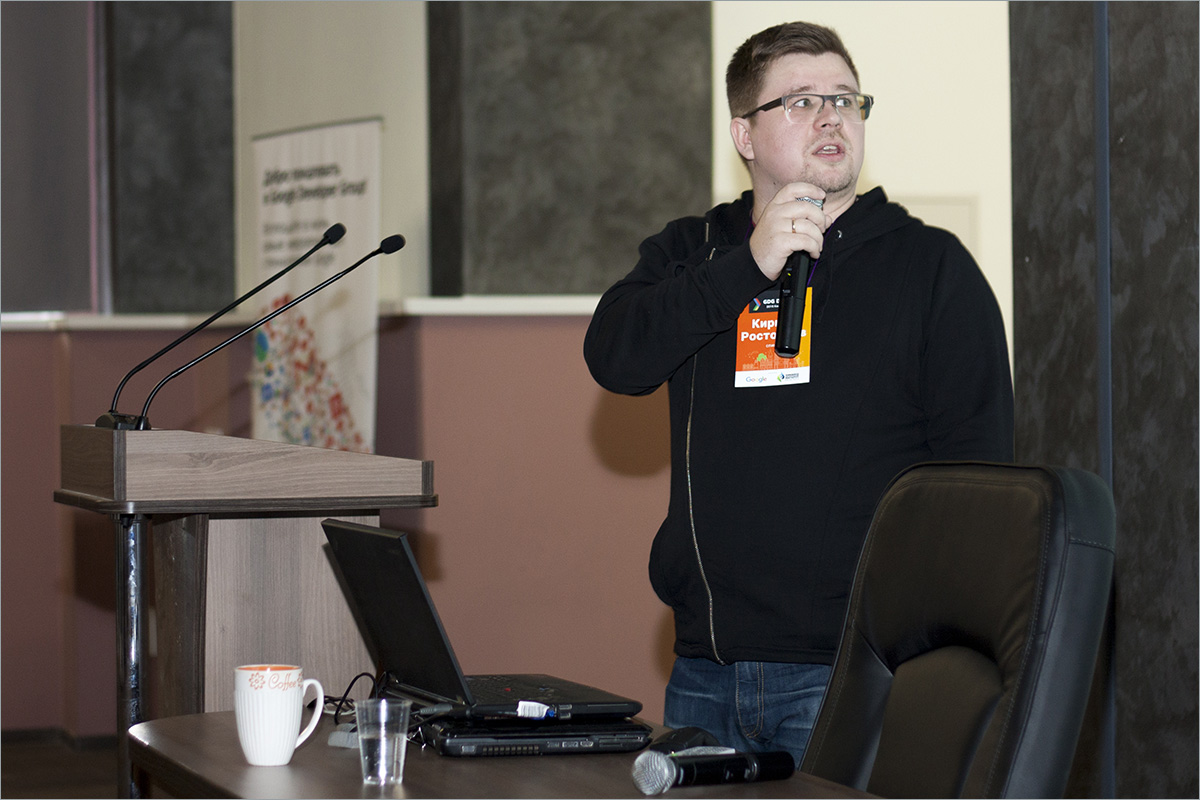
Cyril graduated from the British Higher School of Design and the University of Hertfordshire and has been involved in design for more than 10 years.
Theses:
- The design process of the application from drafts to testing;
- How can a designer interact with developers, analysts, sales, support, and everyone else, and why;
- Adaptation of the application for Material Design;
- Is Material Design so good as they say about it;
- In what situations do I need a UI / UX designer, and in which I do not need.
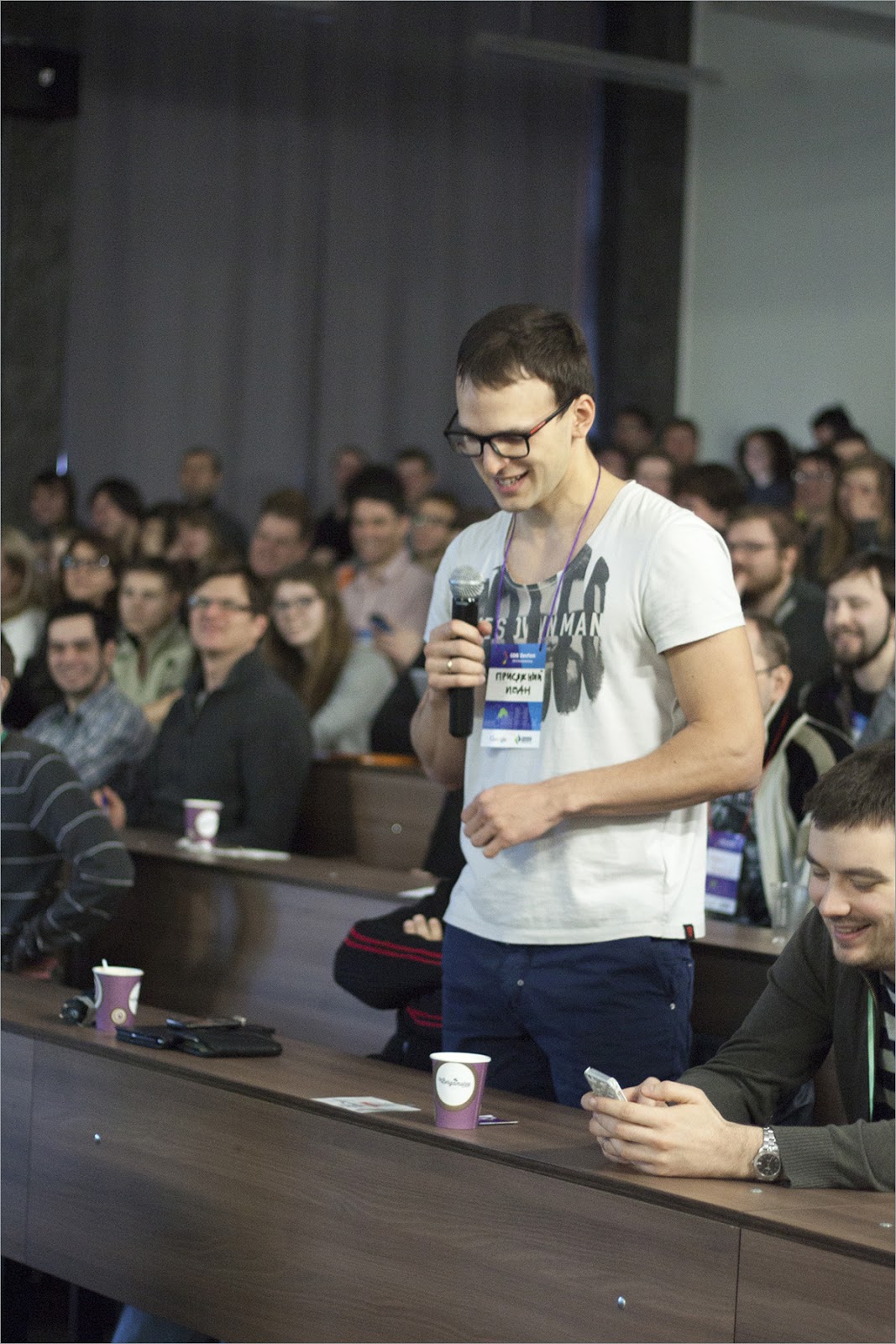
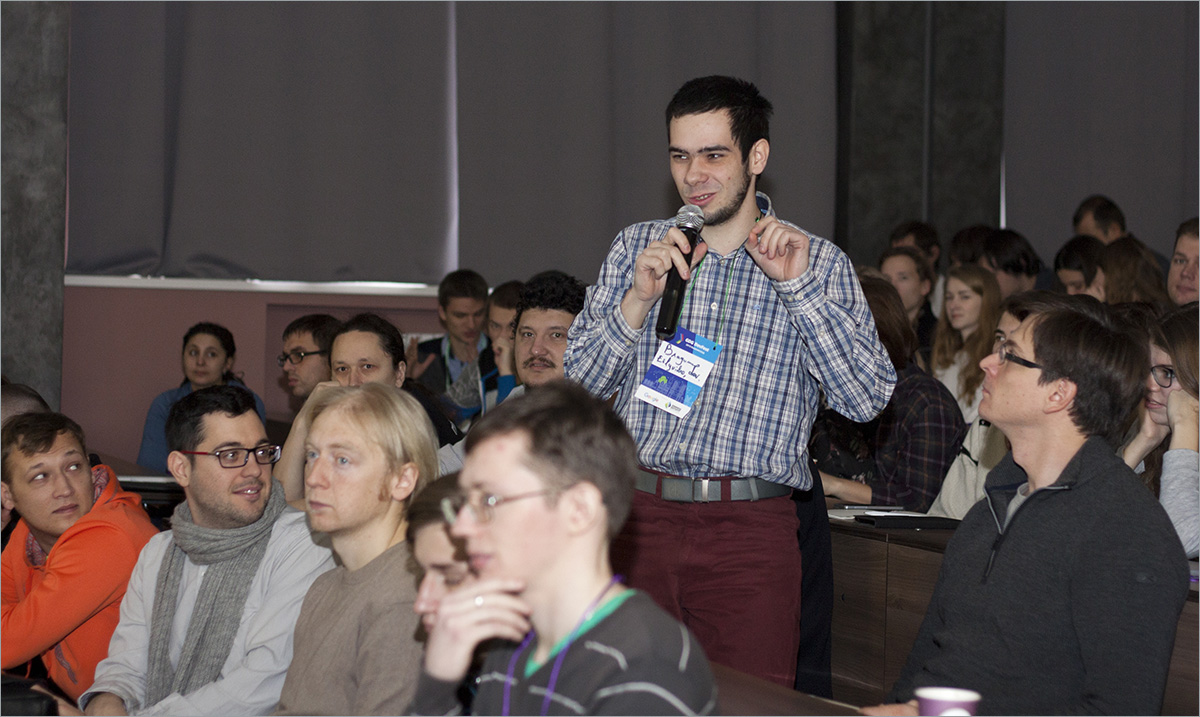
No questions were spoken to the speaker.
The next to take the stage was Sergey Sheleg - Ultimate-Guitar Seniour Android Developer.
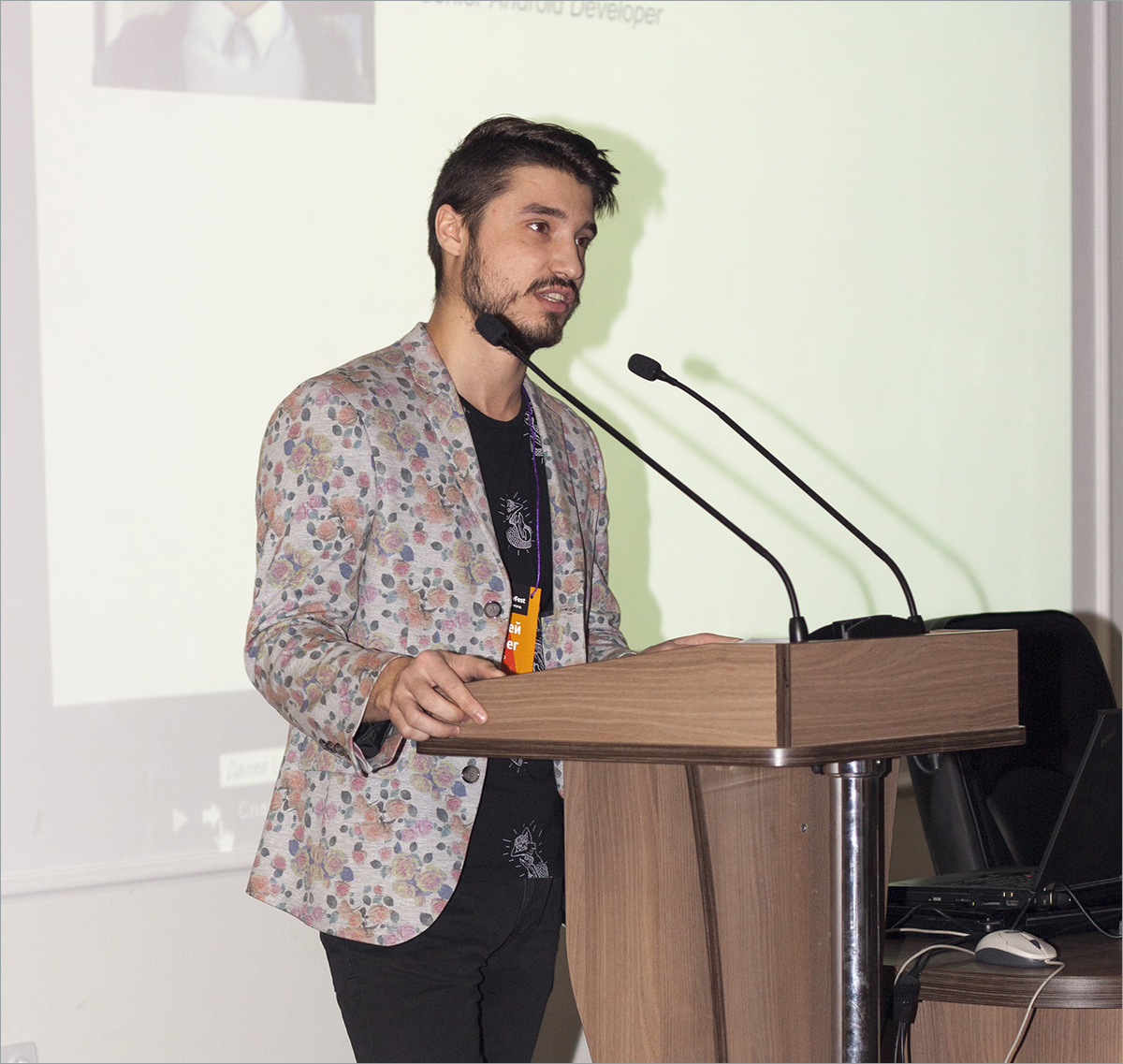
Sergey has been developing Android applications for more than 3 years.
Theses of the speech:
- Types of featured on Google Play;
- Requirements for the interface and design of the application;
- Requirements for functionality;
- Work on reviews;
- Quality Review;
- Support for Android Wear and TV.

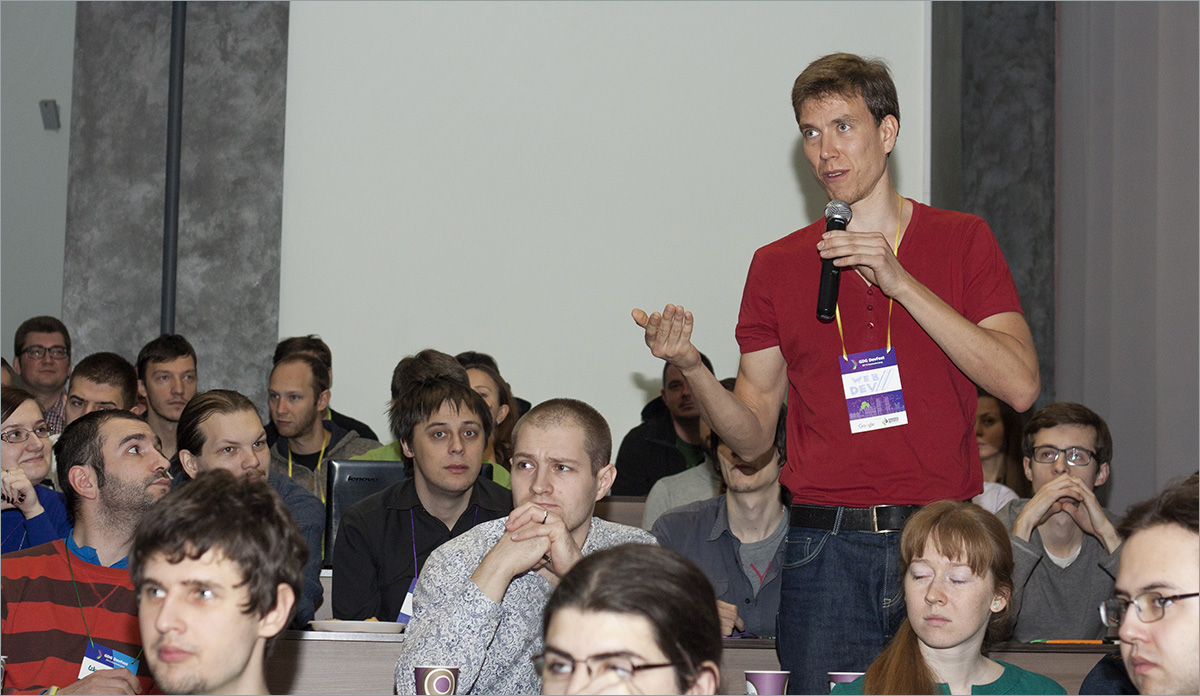
Before the lunch break, we managed to listen to another speaker who flew to us from Moscow - Kirill Danilov.
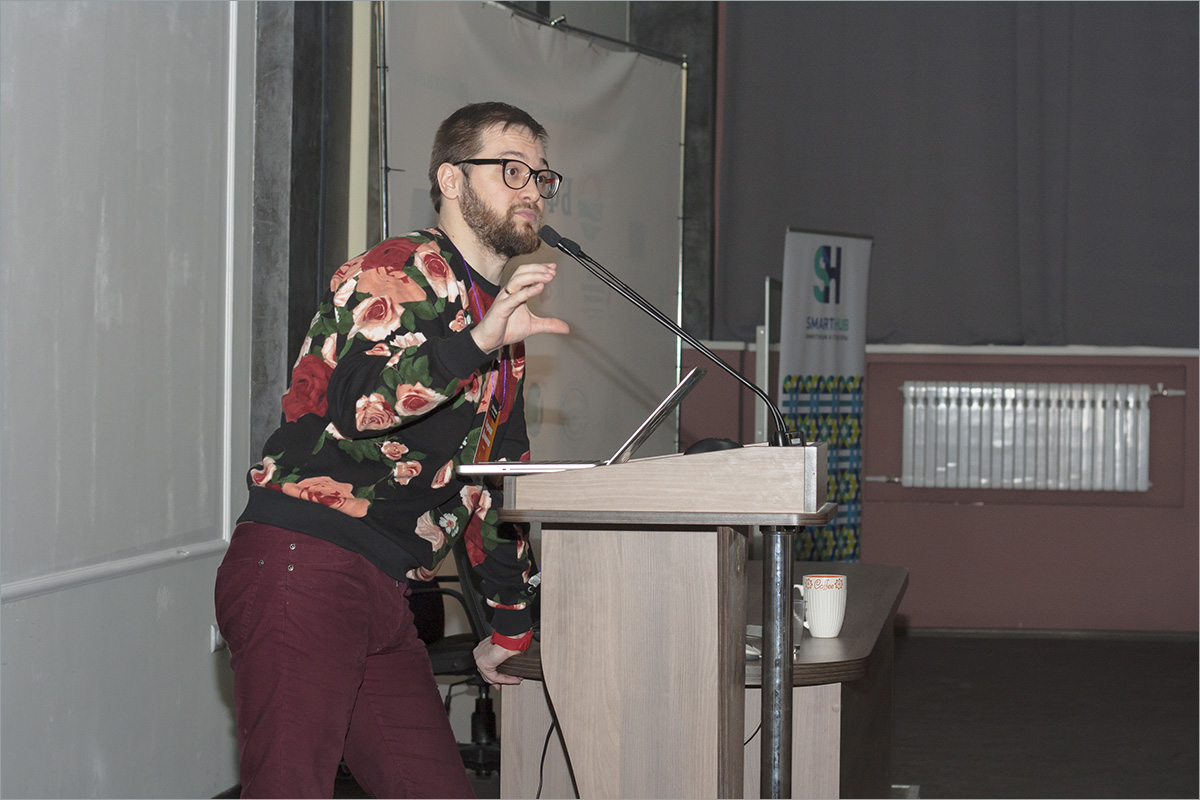
Kirill is the head of the mobile applications department at amoCRM.
The developer of full-cycle products, has extensive experience in developing mobile applications for different platforms. A fan of hackathon movement, open web technology and wearable technology. Previously an evangelist of the Tizen and Android platforms in Samsung Russia.
Imagine that you need to display large amounts of data in a mobile application. To do this, we need a REST API interface and page-by-page data loading code. But the same can be done by saving all the data in the local database. About how to do this effectively, Cyril and spoke in his report.
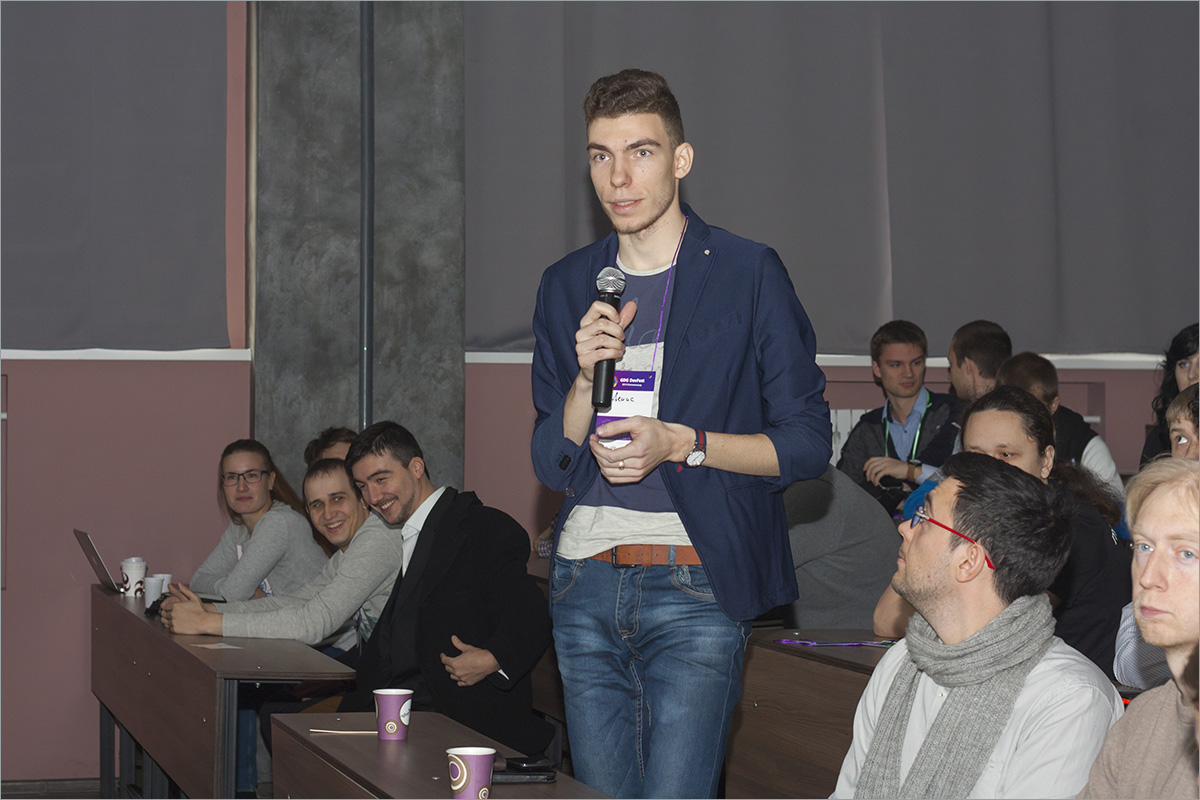
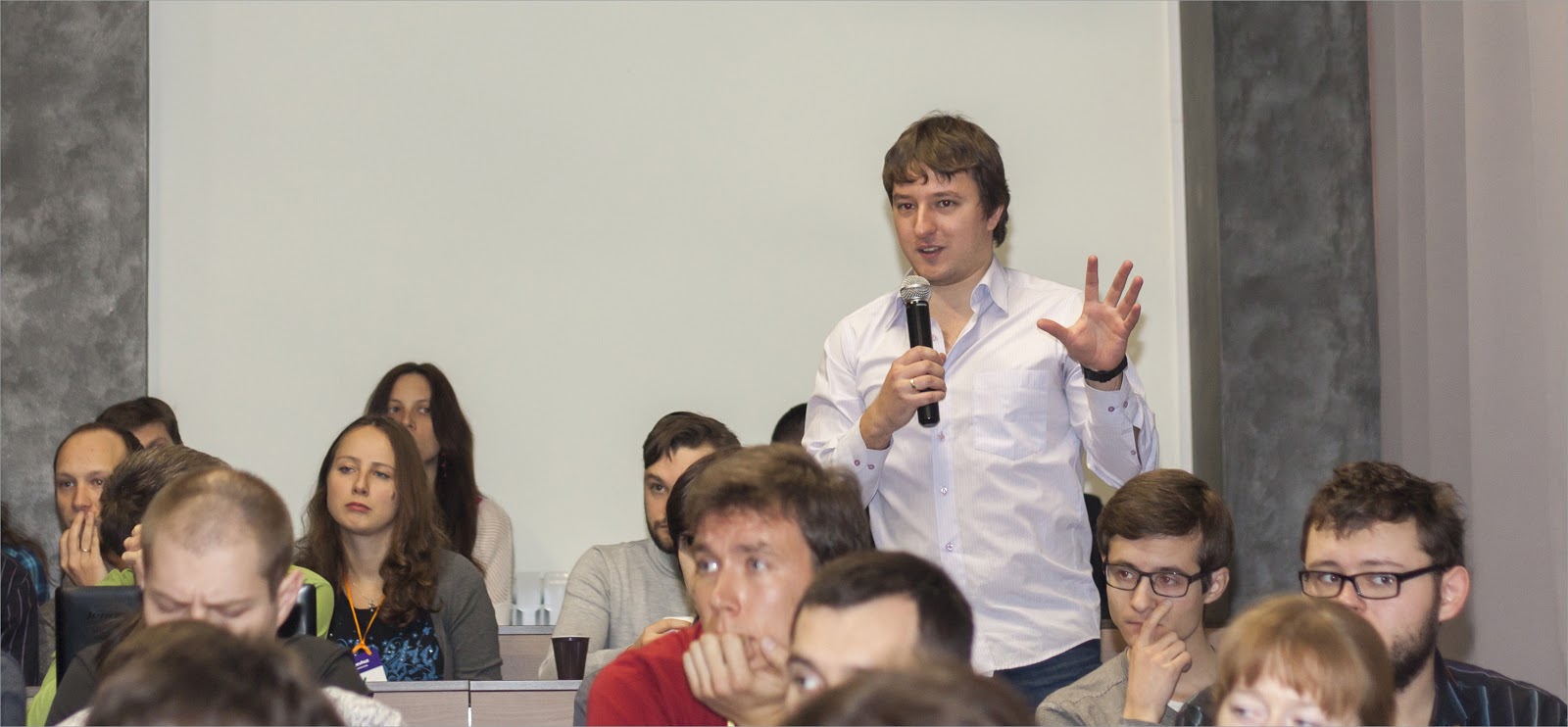
After 2 hours of absorbing useful information from the speakers - it's time to eat. :)
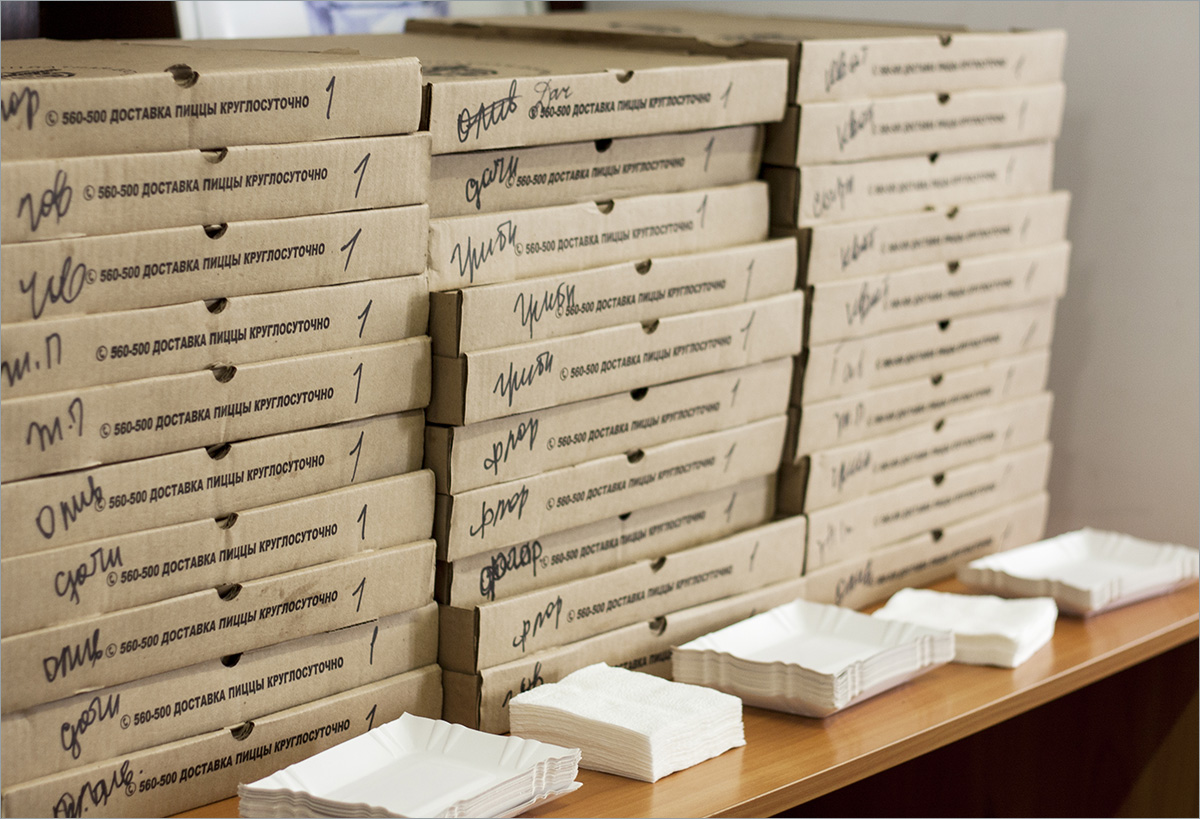
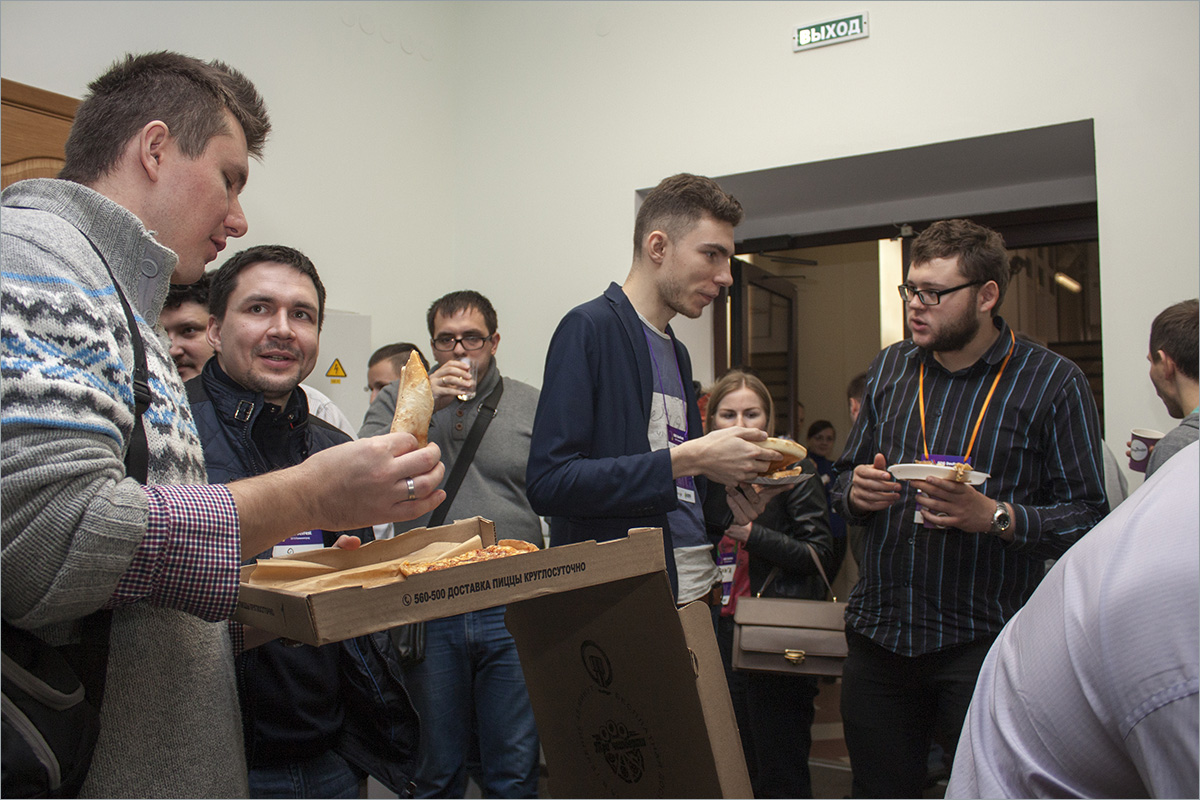
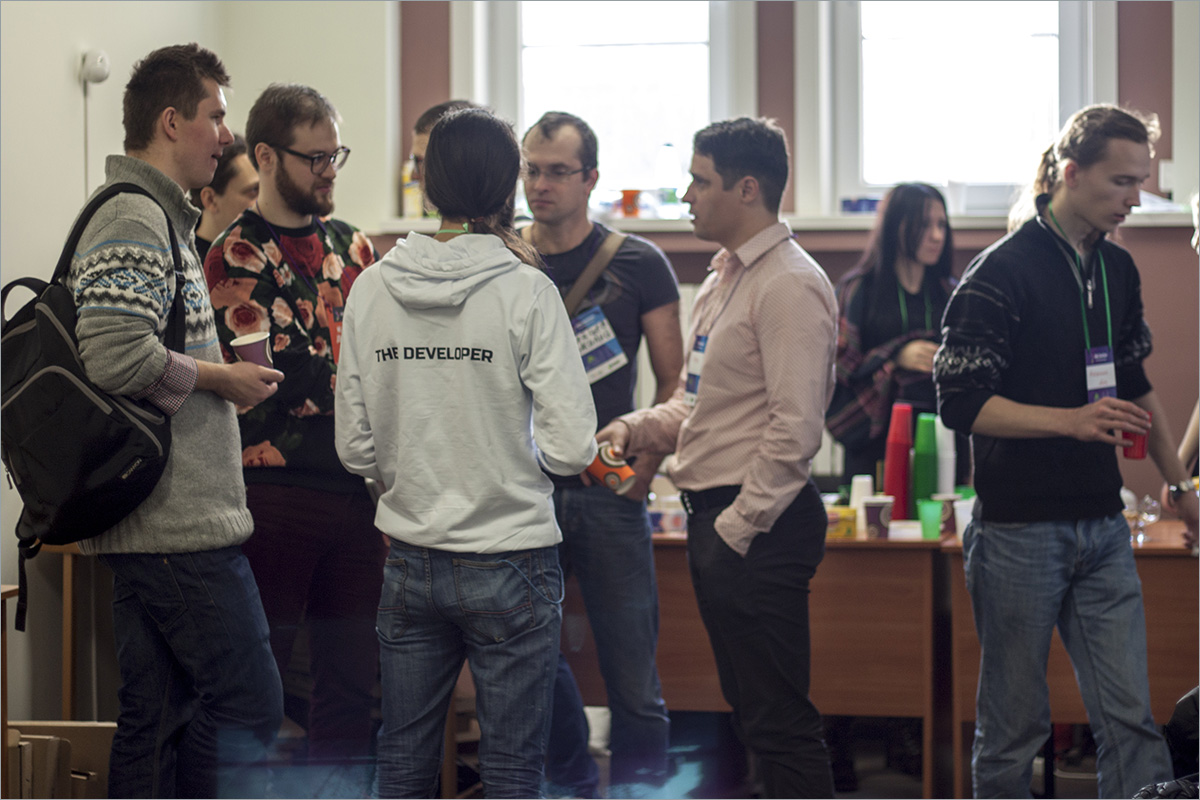
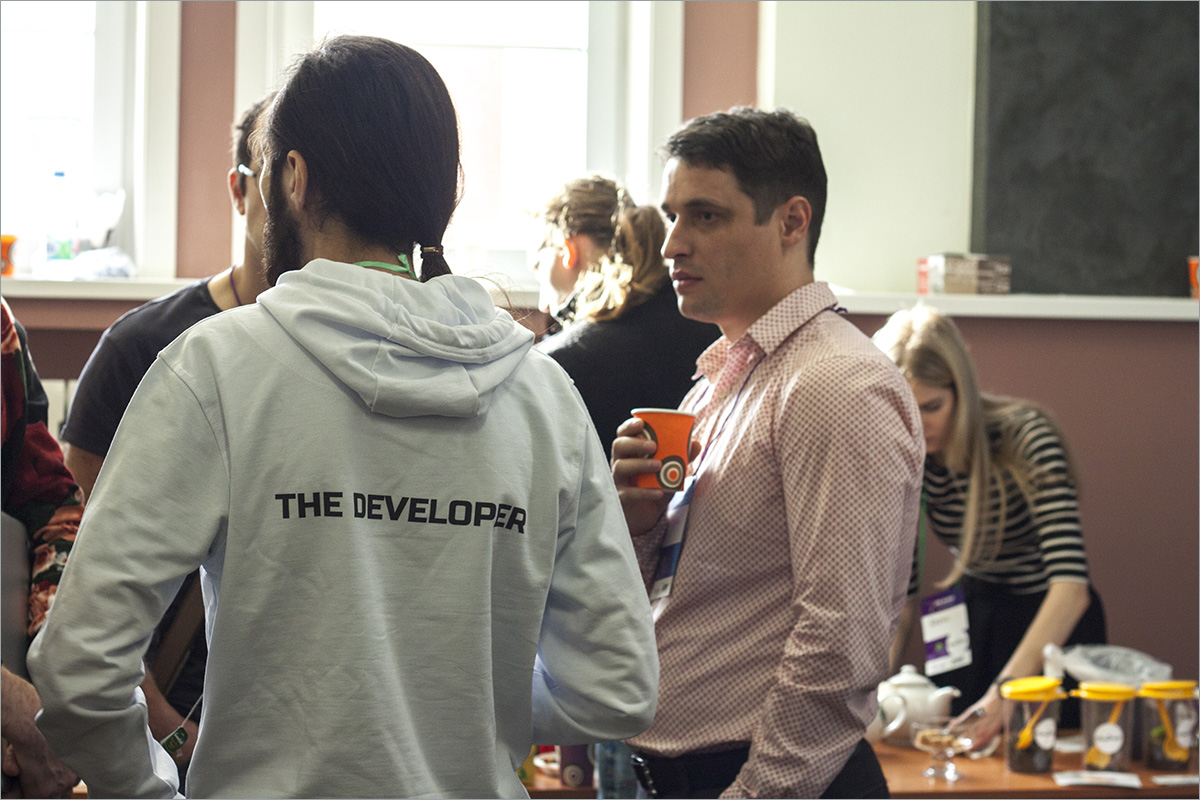
Those who did not have time to ask speakers questions during their speech could do this during lunch.
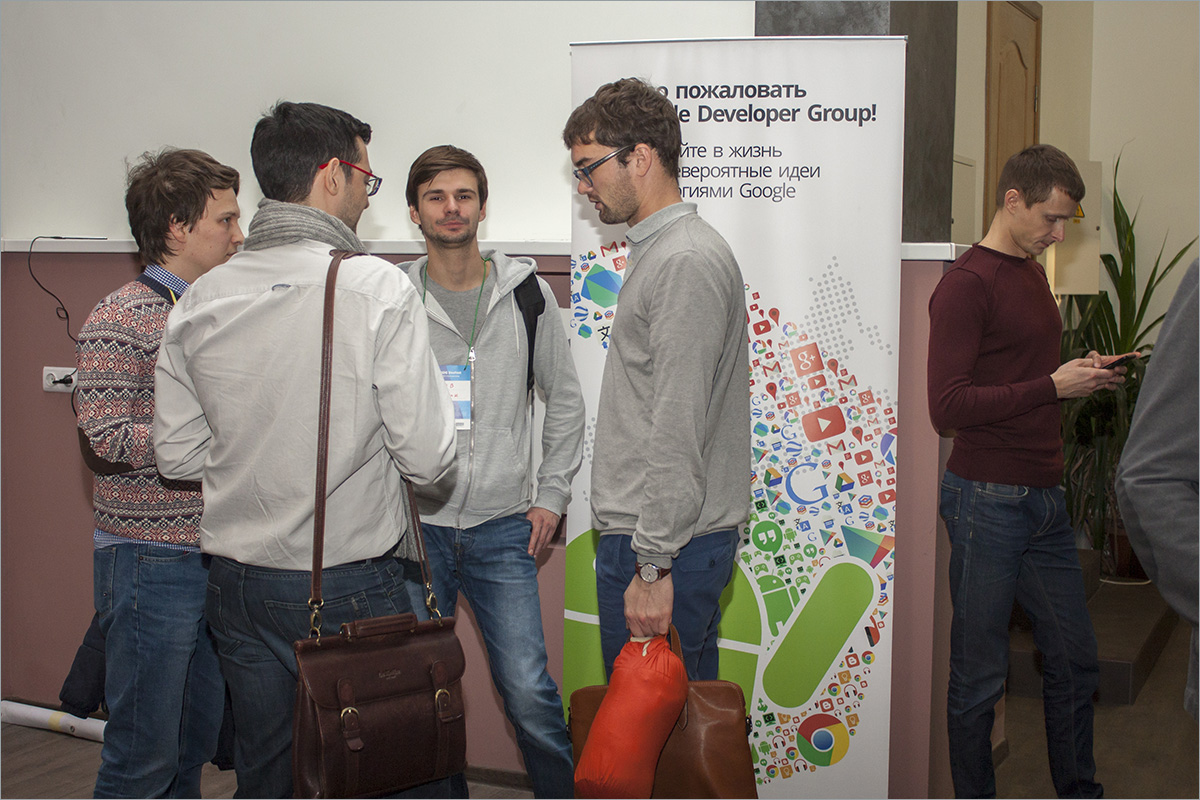
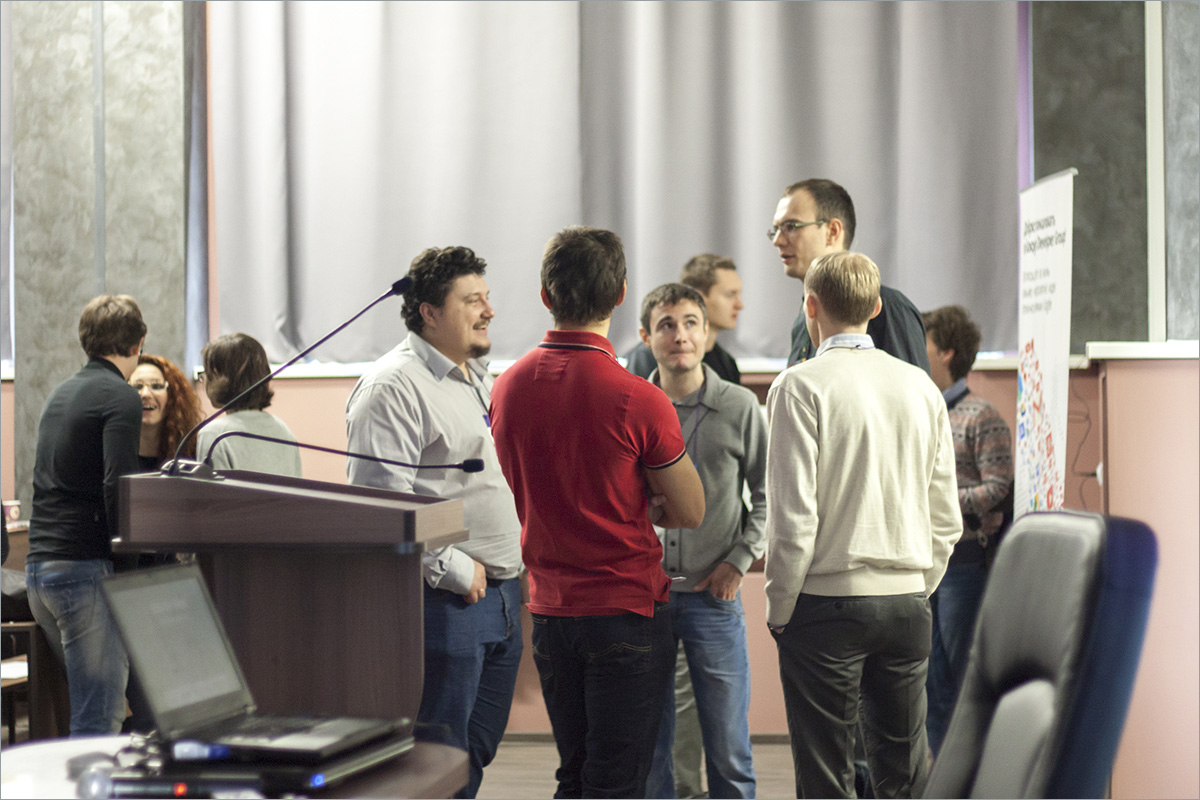
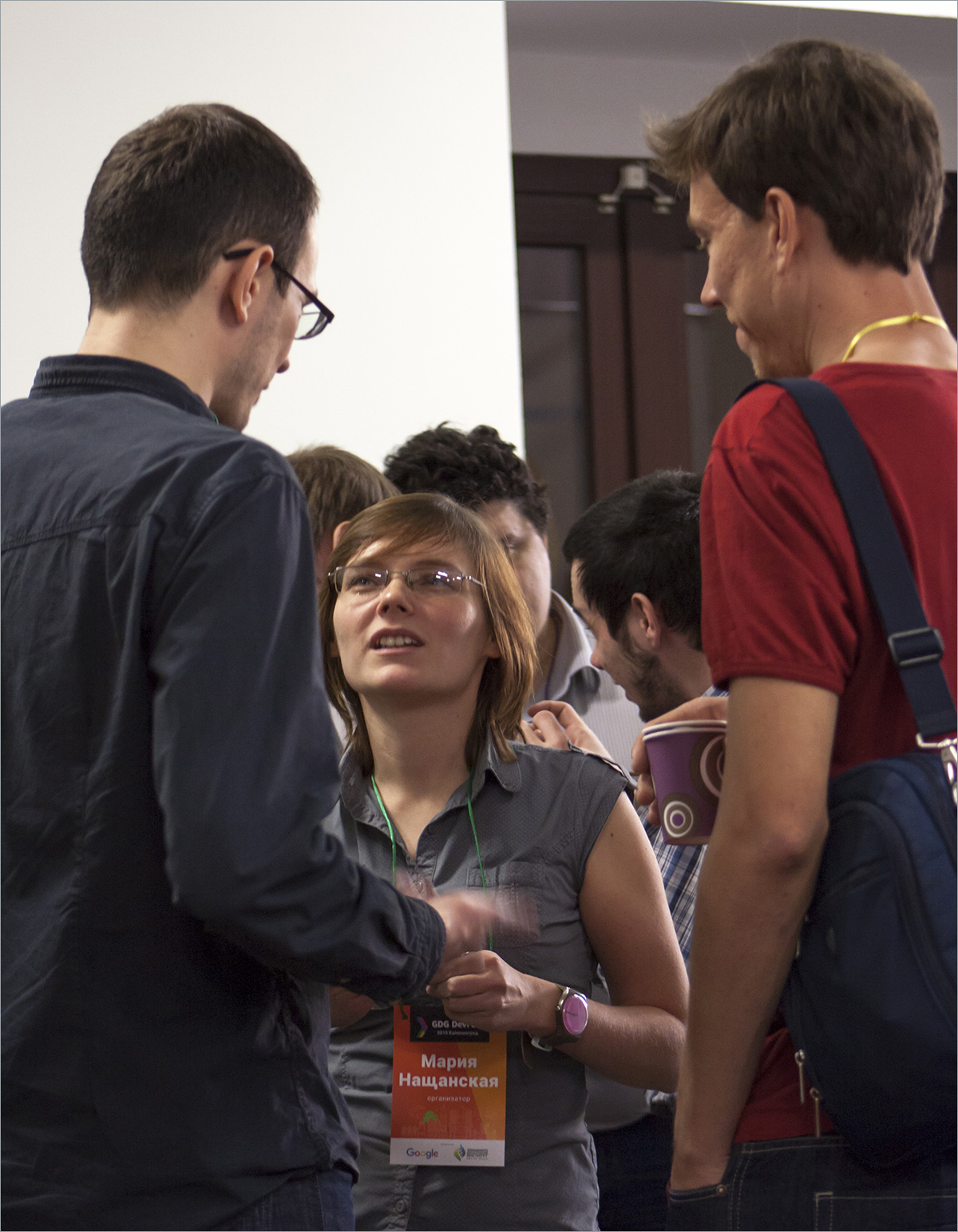
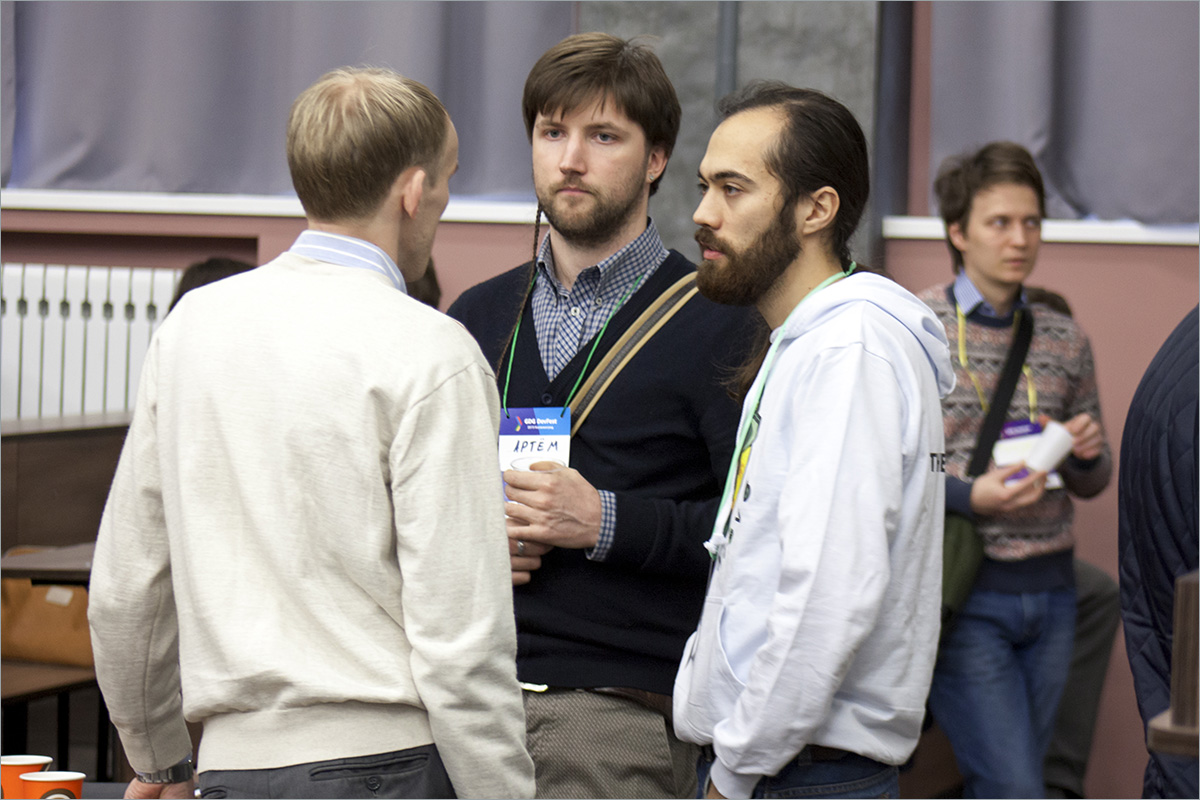
The second part of the conference was opened by Dmitry Suzdalev - techlide of Android-direction of the company KODE.
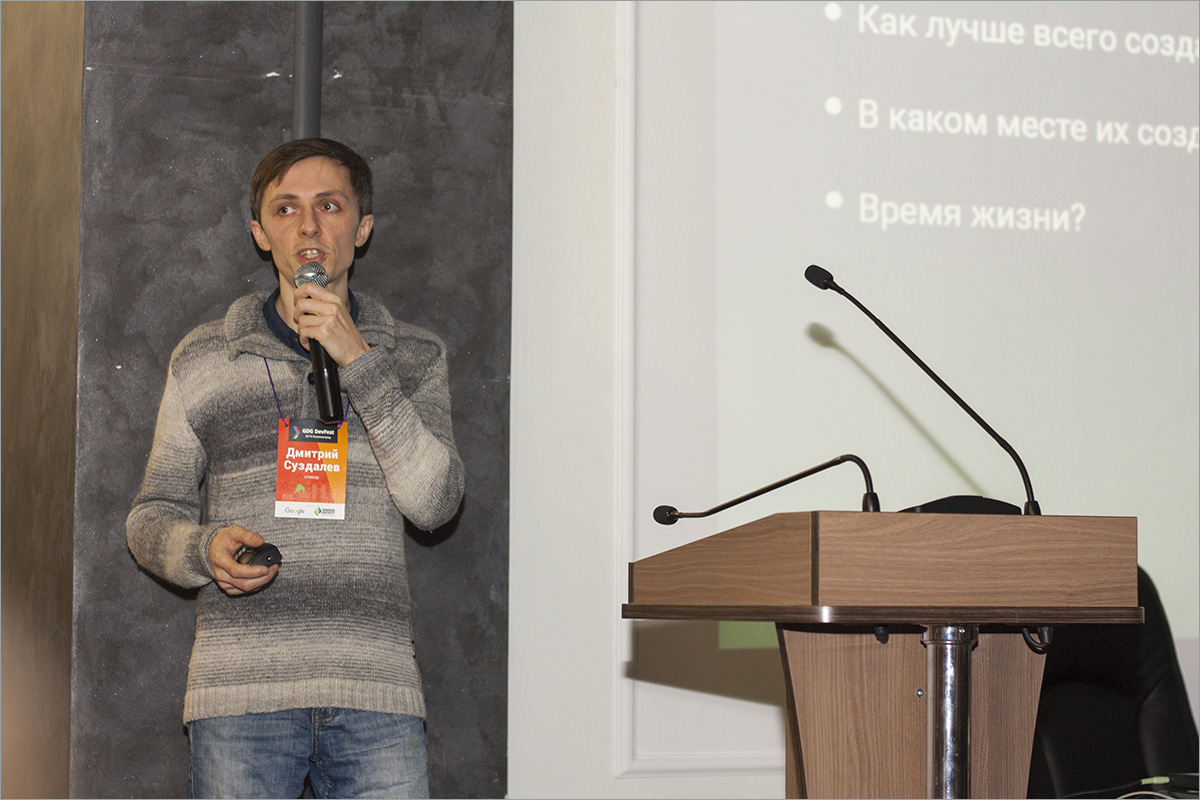
Dmitry worked for several years at Parallels (Moscow) as a UI developer, then became interested in programming for Android. He has been doing this for 4 years, he worked with private companies on several applications.
Abstracts:
- use of the Dagger 2 library for modular organization of application components;
- Simple and intuitive access to the Backend API using the Retrofit library;
- use of the RxJava library for flexible task management;
- reducing the number of boilerplate code using Java Annotation Processing technology and various libraries that use it.
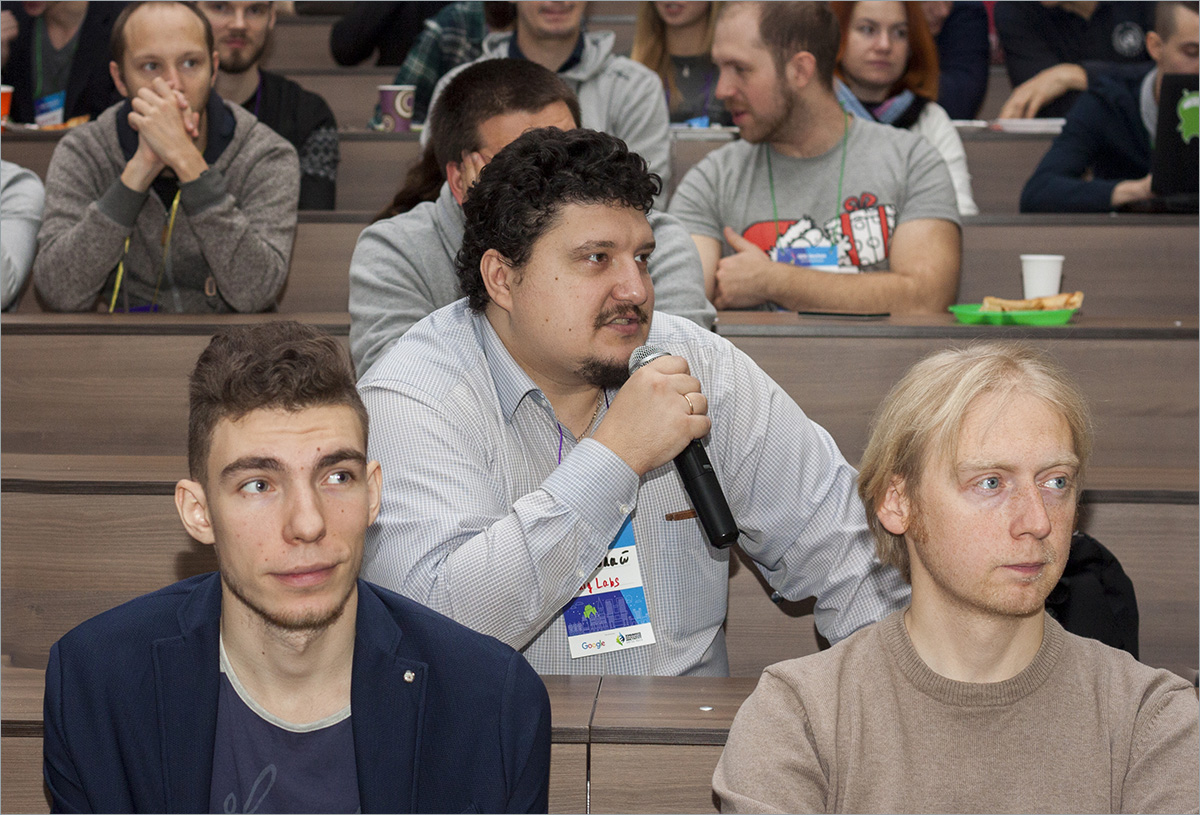
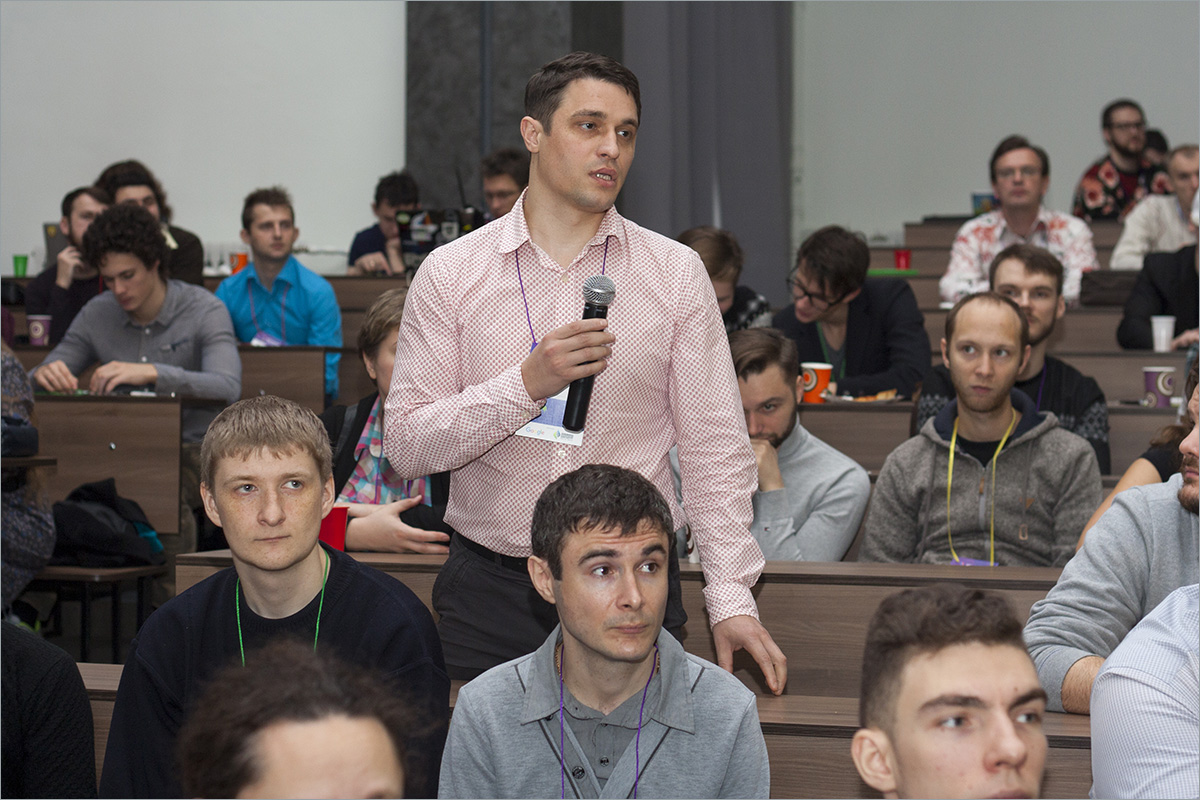
The next speaker was Grigory Dzhanelidze, a speaker from St. Petersburg.
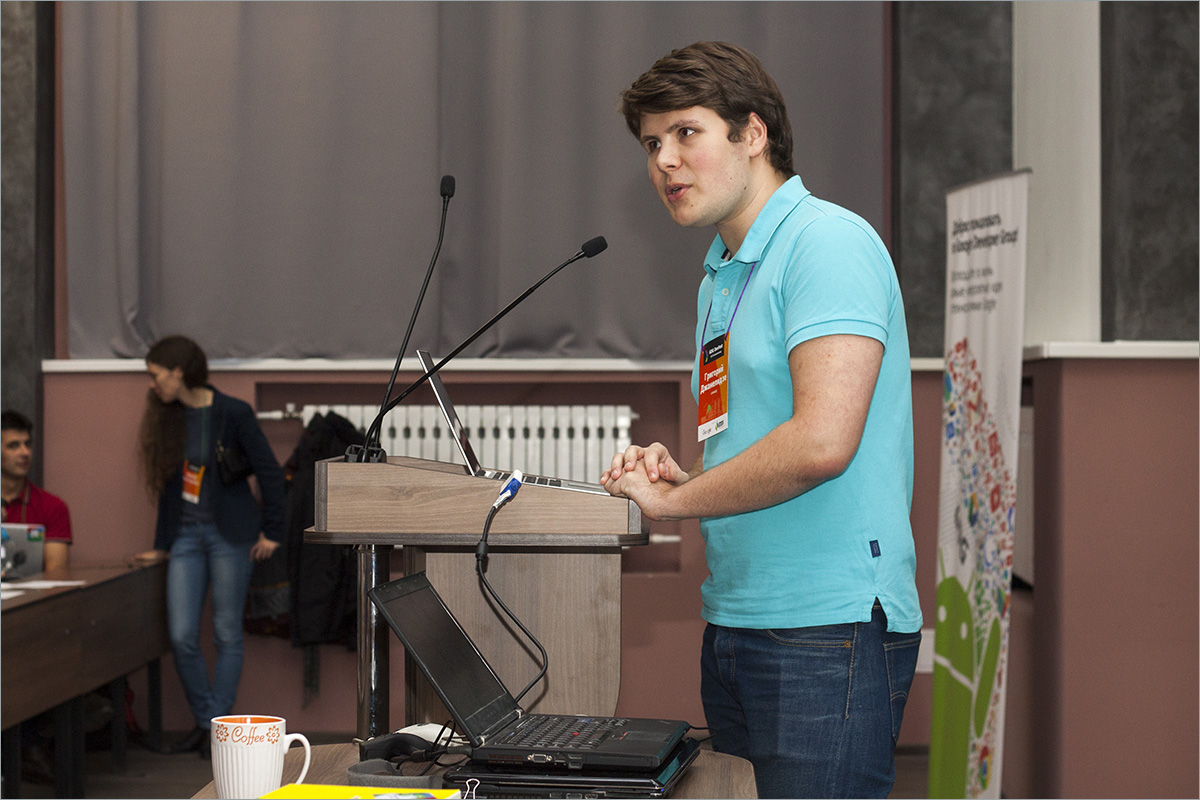
Gregory developed applications for Yandex, Classmates, Tele2 and other companies. (fuck!)
Theses:
- Object recognition - what is it and why is it necessary at all;
- An overview of old Android solutions;
- Mobile Vision API - description, comparison and pitfalls.
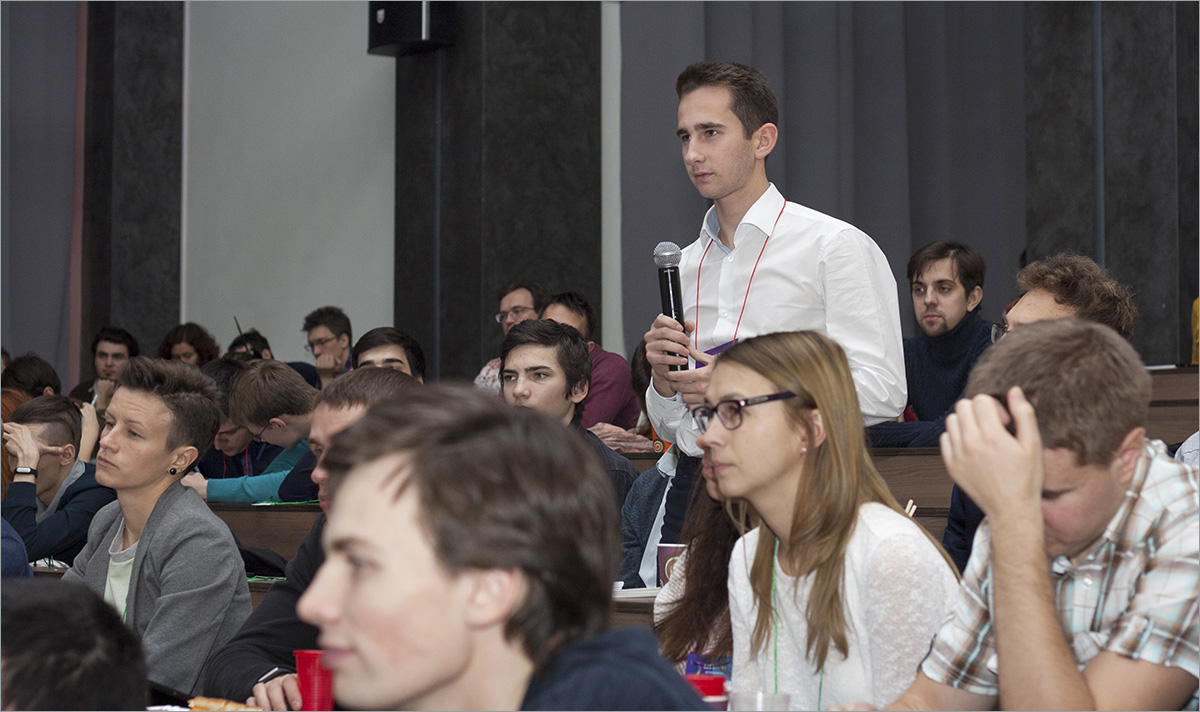
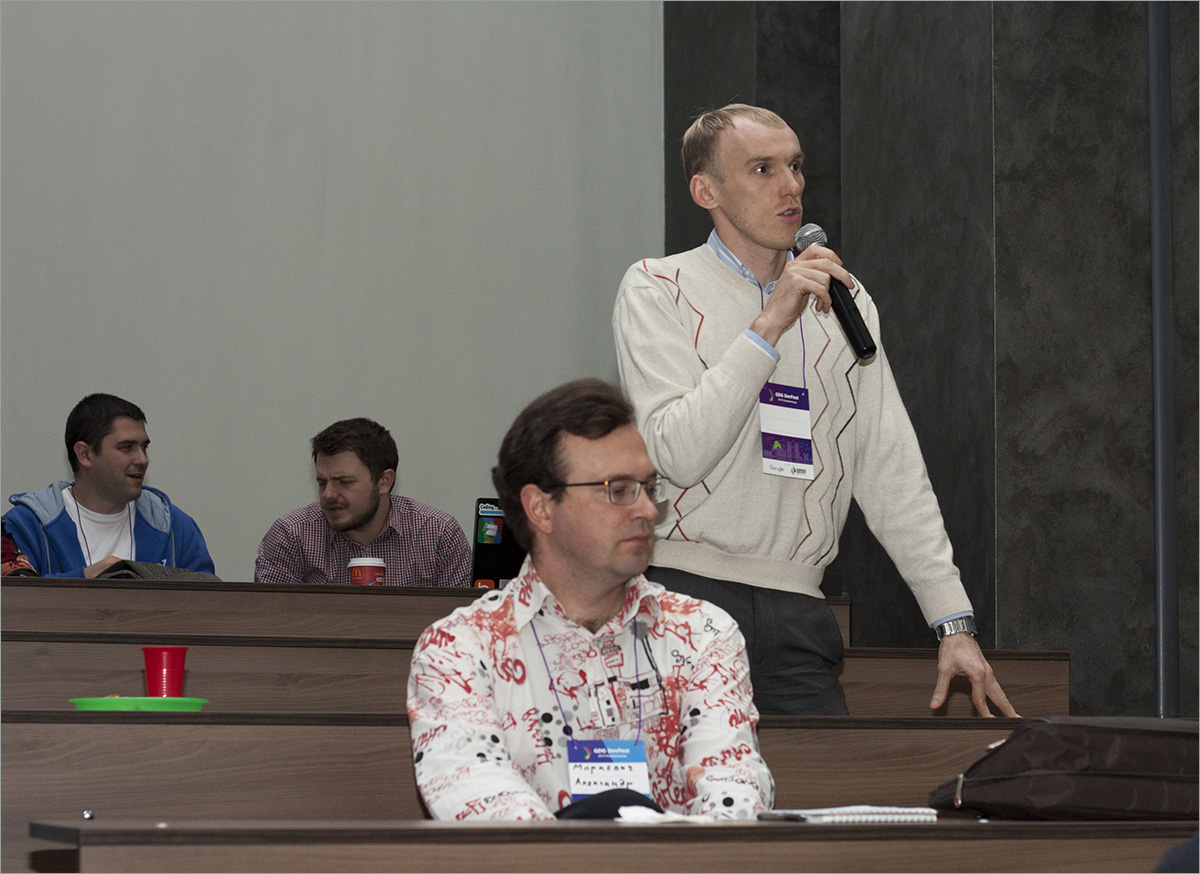
After a 20-minute coffee break, we turned to IoT reports.
Nikolay Khabarov flew to us from Voronezh (hello, GDG Voronezh!).
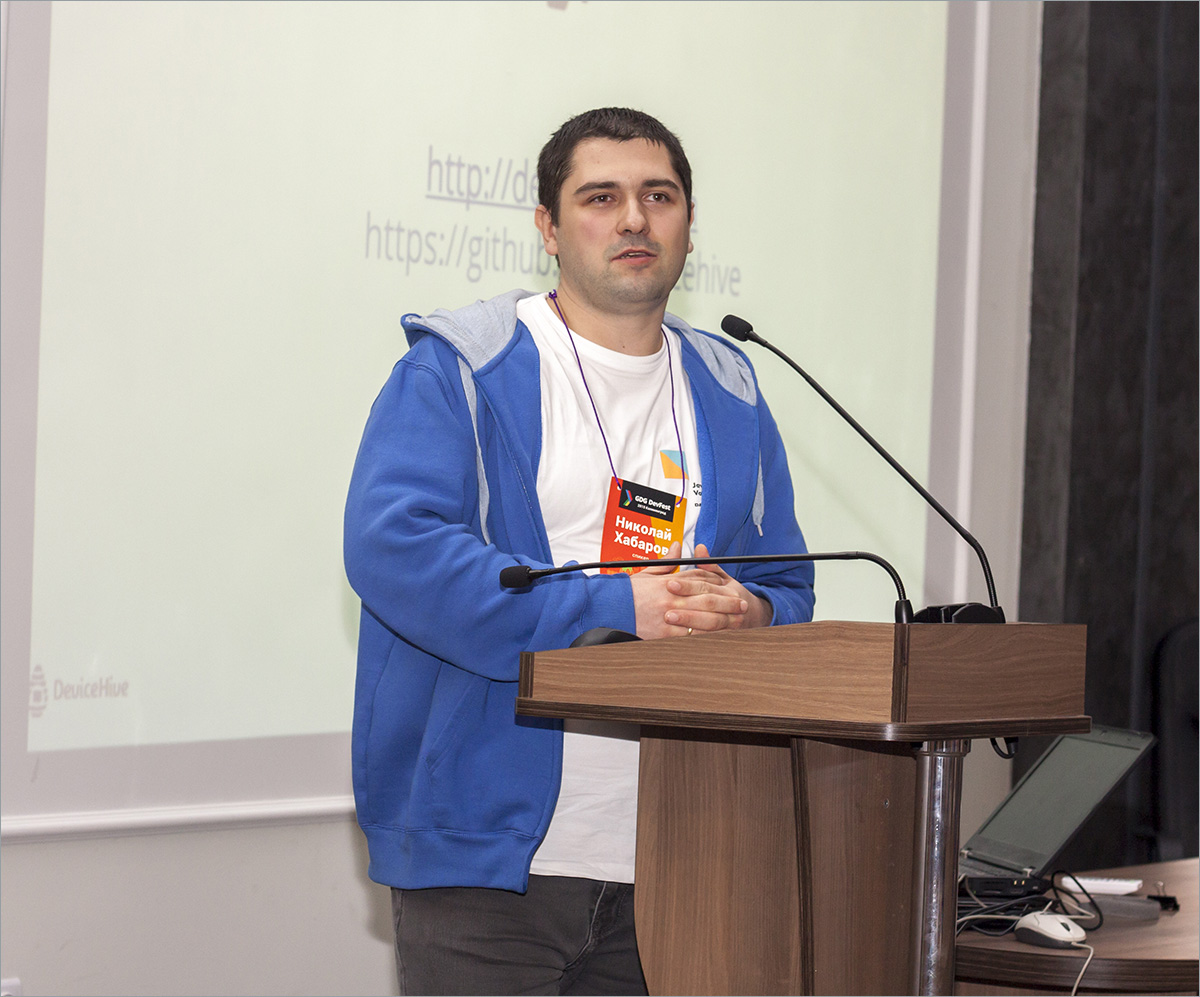
Nikolay is a Senior Embedded Developer at DataArt.
Over 8 years of experience in the development of embedded systems and application software. He is a radio engineer by education. Most of his completed projects included radio devices and digital signal processing algorithms.
Theses:
- IoT in the modern world;
- BLE devices and Android;
- DeviceHive platform;
- connection of BLE devices in the cloud;
- DeviceHive firmware for ESP8266;
- control ESP8266 with Android.
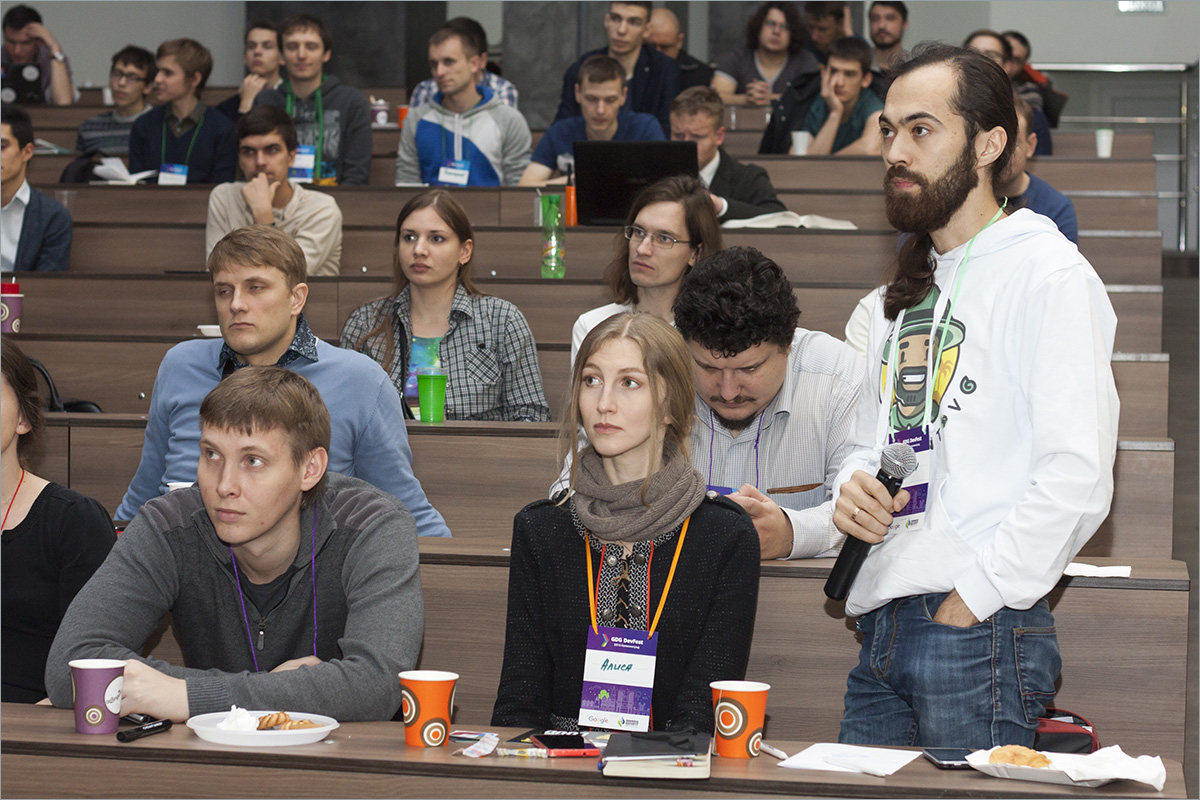
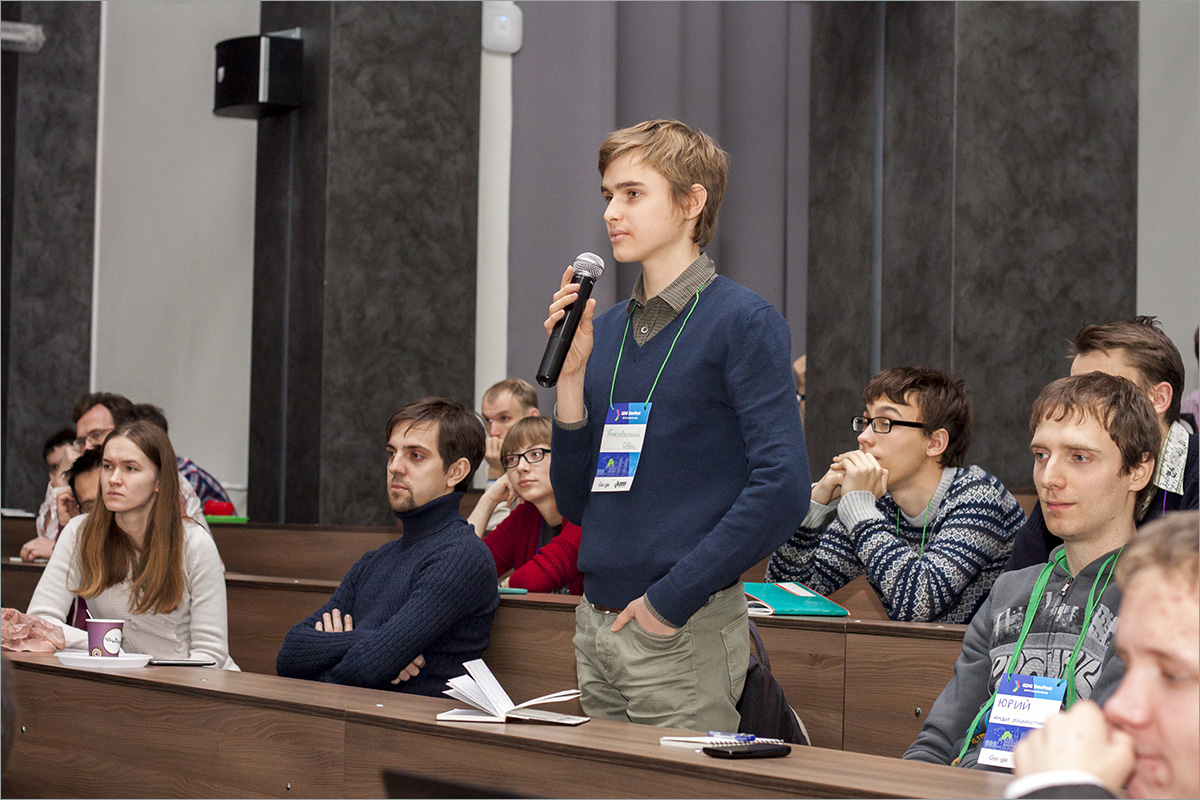
And another Muscovite, Zviad Kardava, finished the conference.
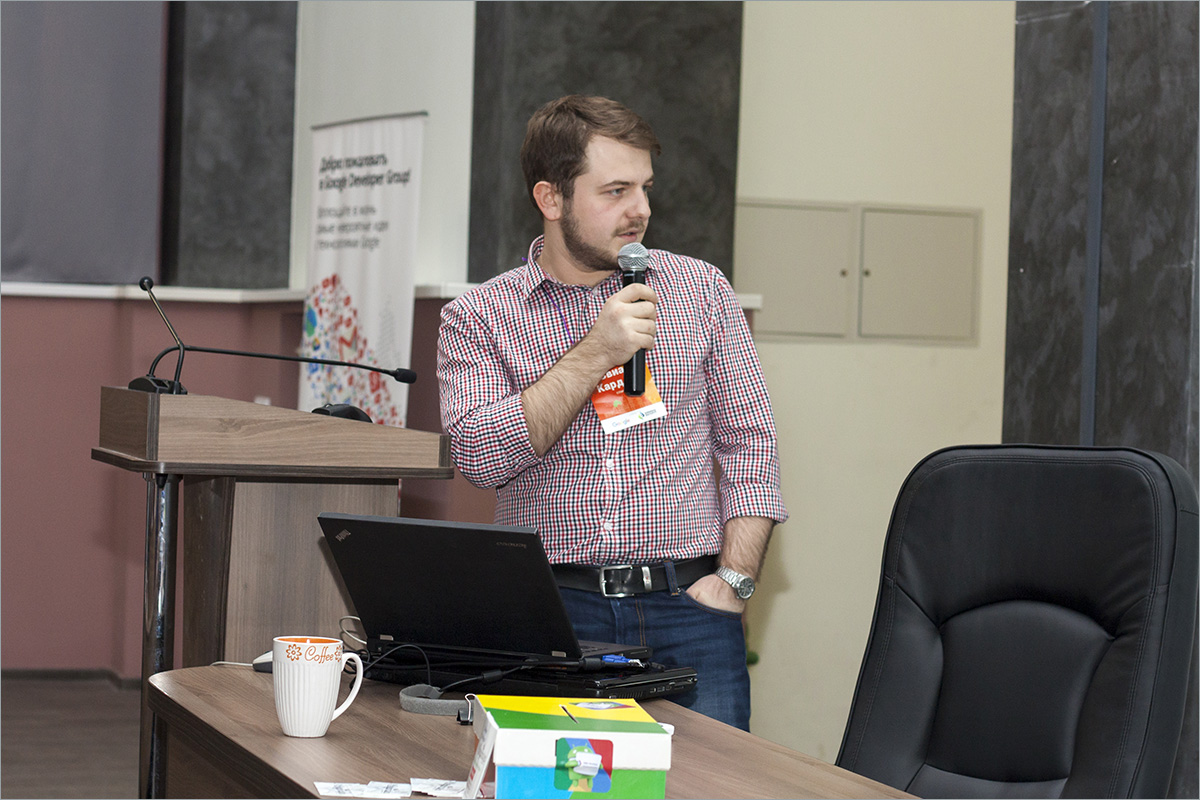
Zviad works at RusBITech as a Software Engineer, writes a Ph.D. thesis at Moscow State University of Technology. N.E. Bauman.
Since 2012, he has been engaged in research and development in the field of distributed systems, high performance middleware and Industrial IoT. These are mainly technologies such as HLA (IEEE 1516-2010) and OMG Data Distribution Service, as well as everything related to them, for example MQTT, which is very often used in consumer IoT.
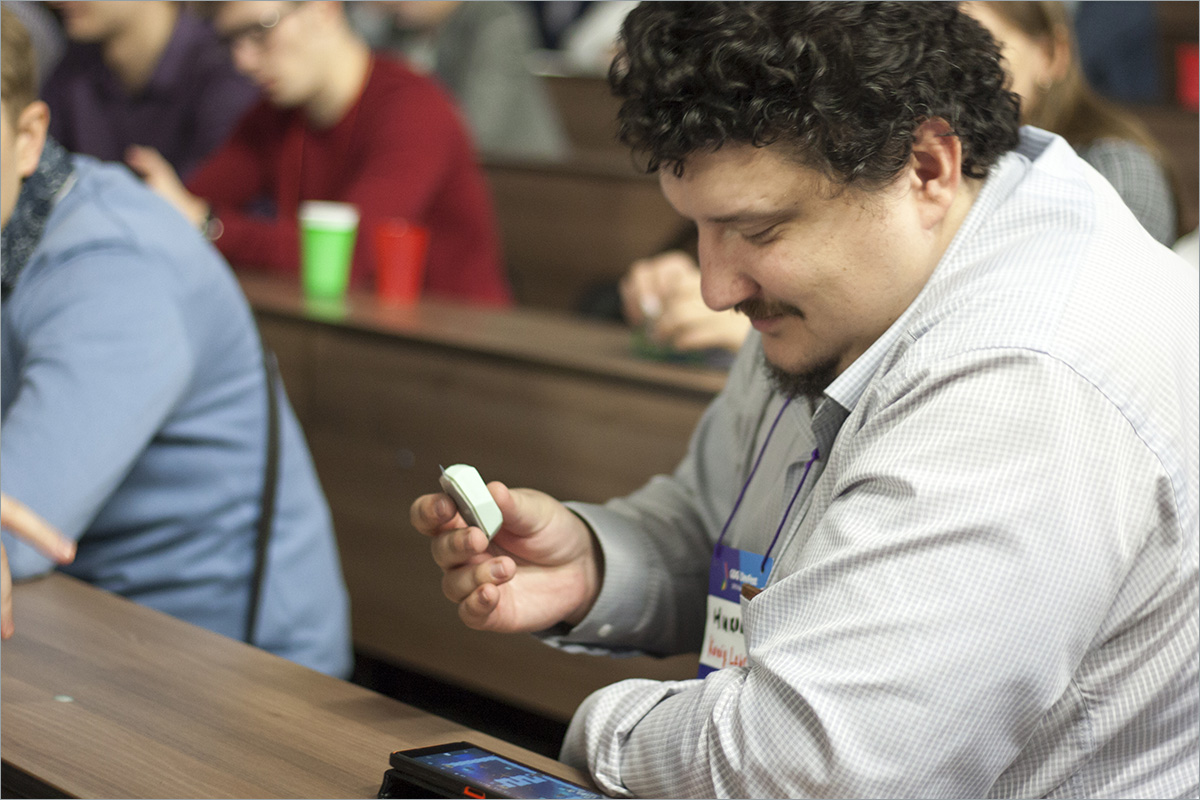
Zviad brought along a visual material of his speech - beacon.
Abstracts:
- IoT from Google;
- The concept of Physical Web. Why is this important and what does it give?
- Beacon platform and protocol specification Edystone (Eddystone format);
- Proximity Beacon API;
- Nearby Messages API;
- Places API.
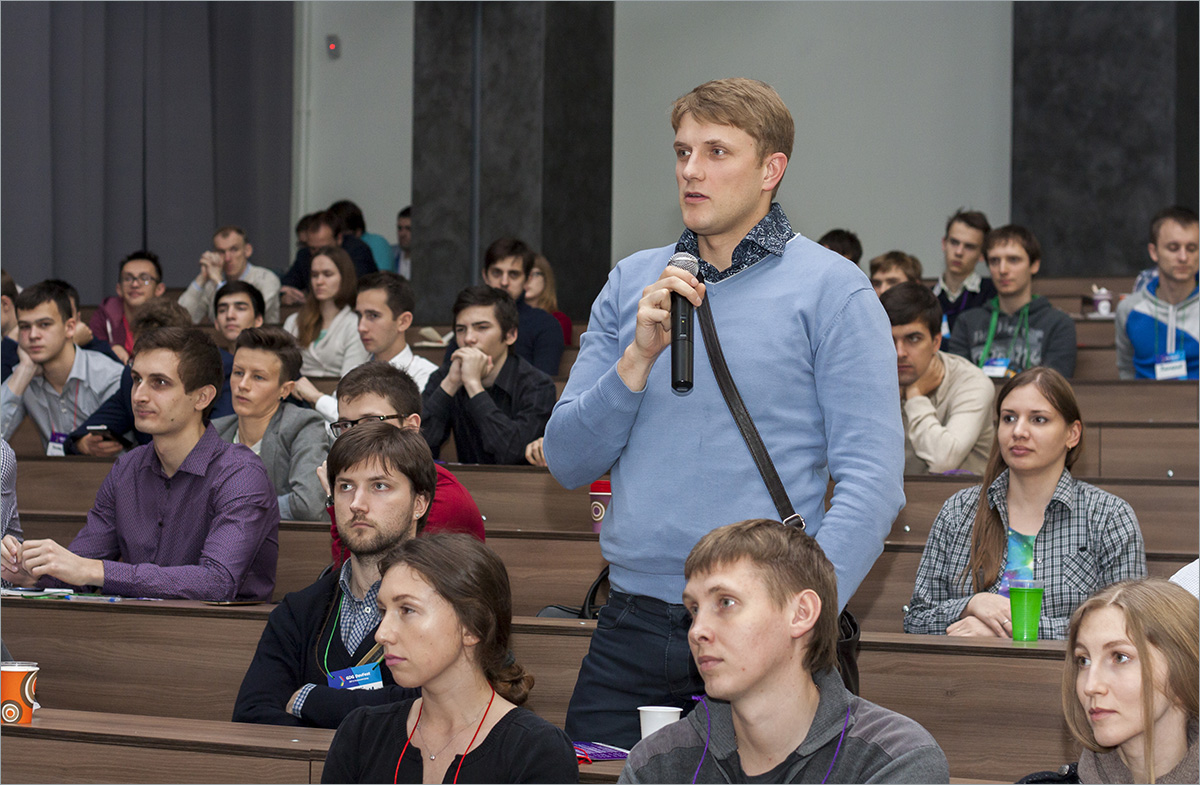
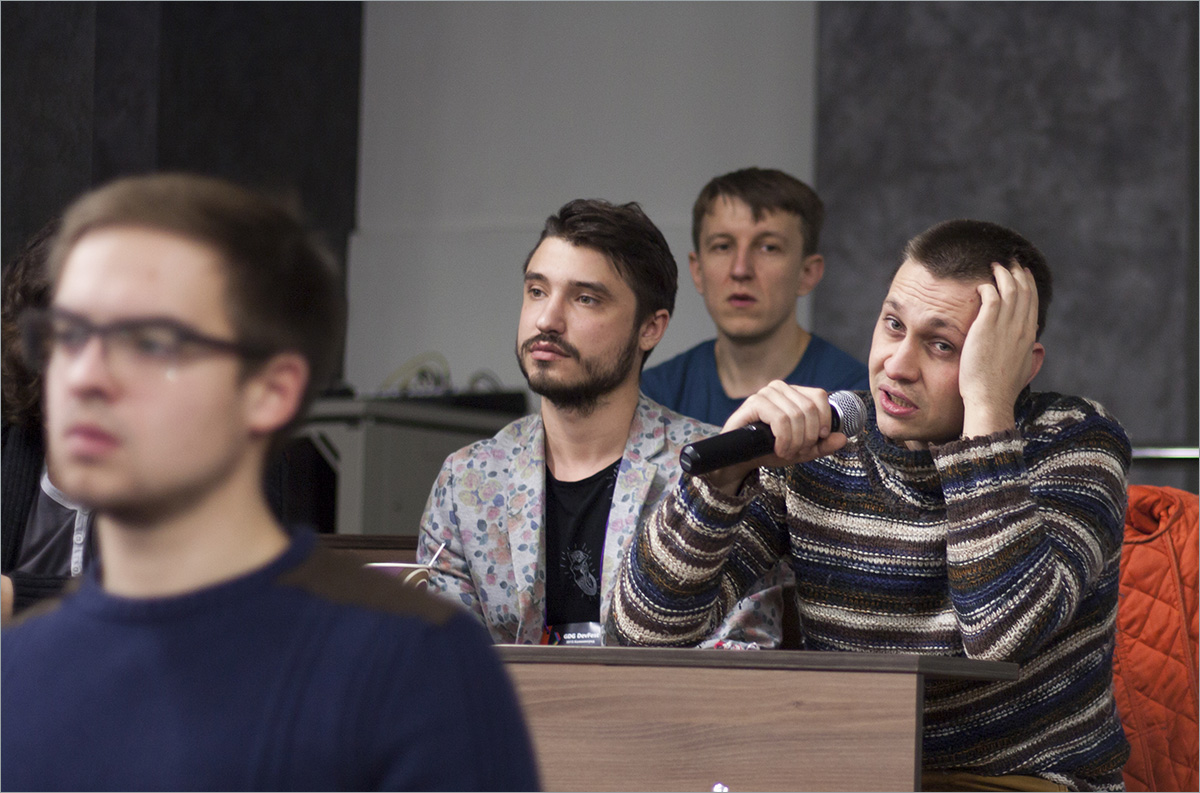
In conclusion, DevFest in Kaliningrad - thanks and a small report on the future plans of the GDG-community of the city.
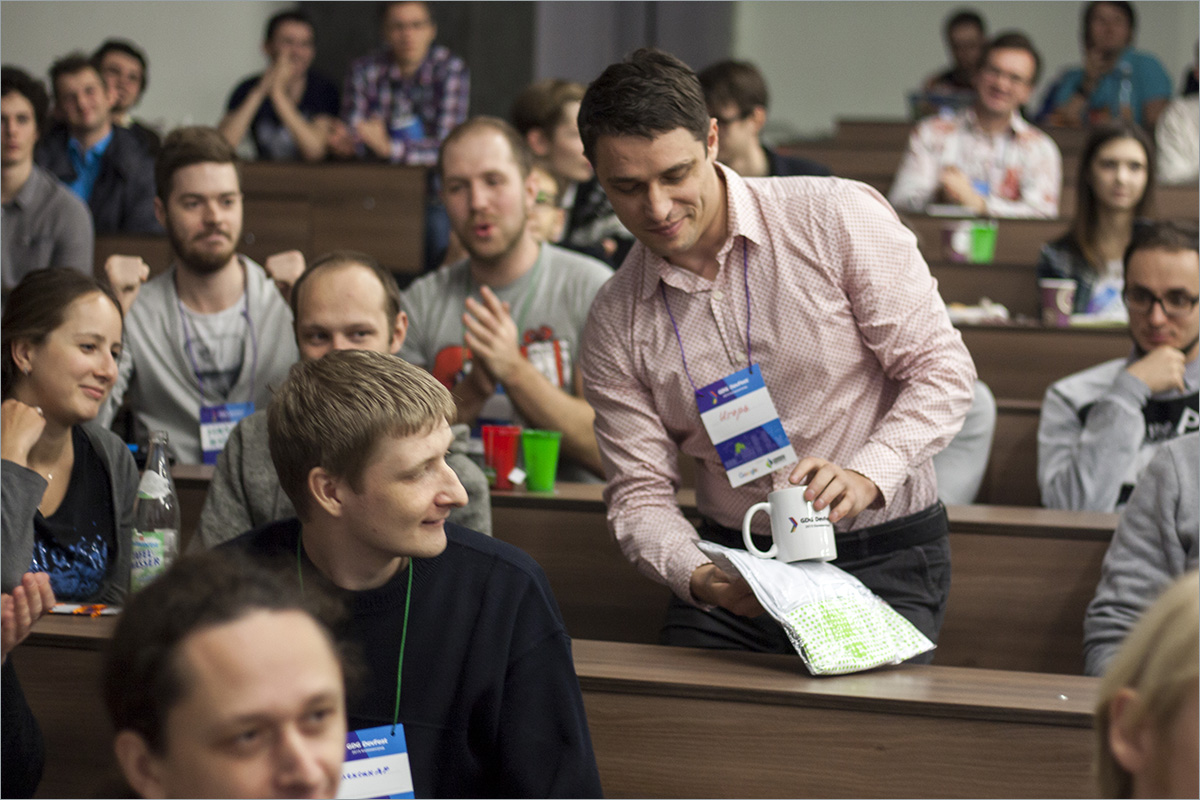
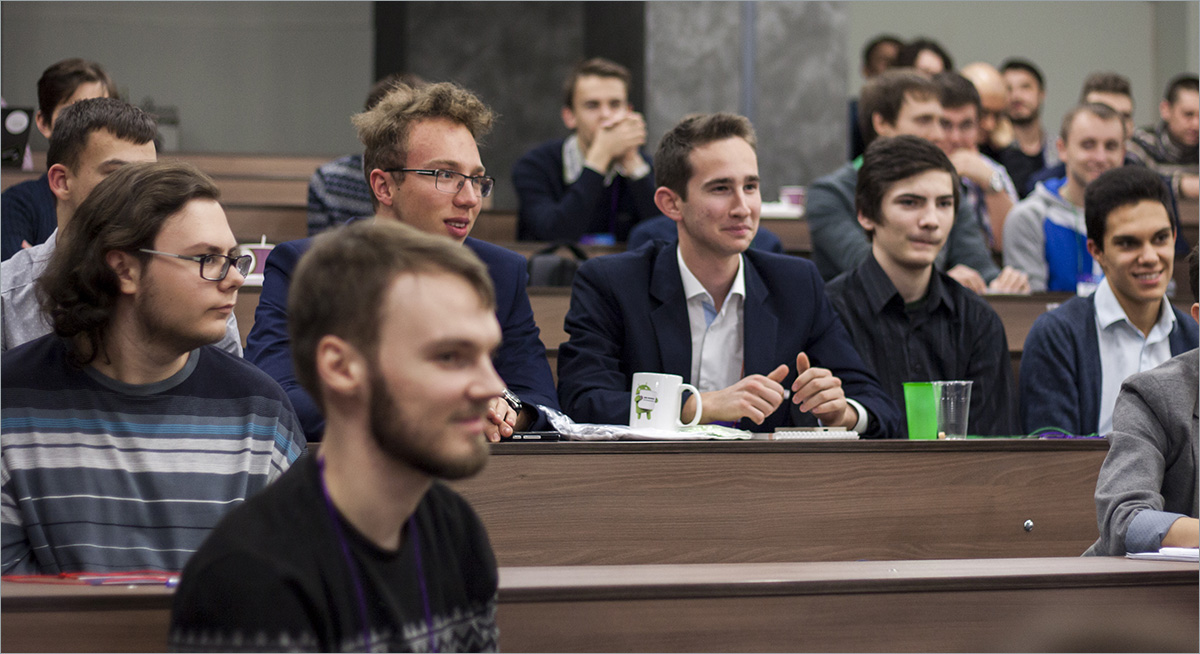
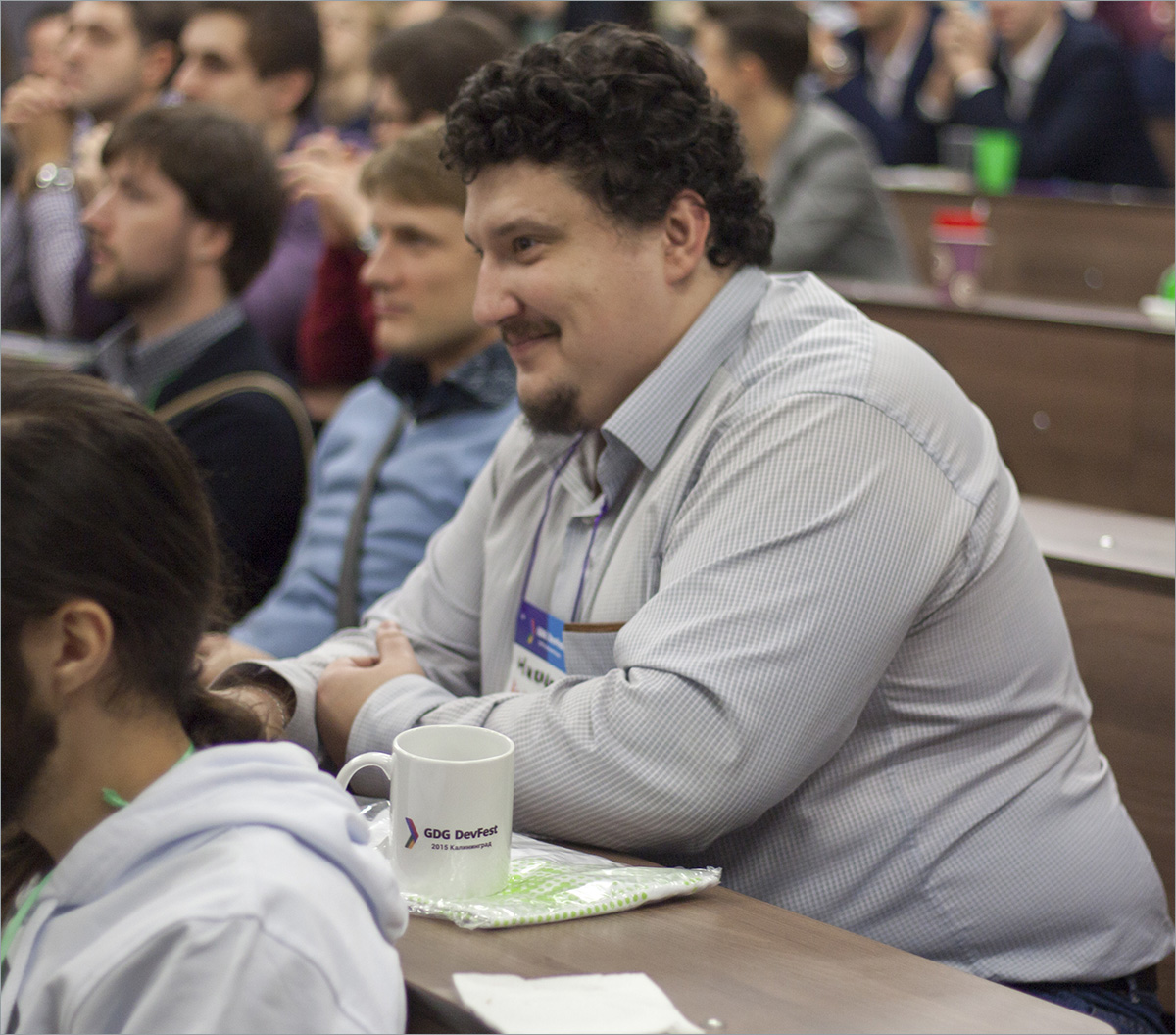
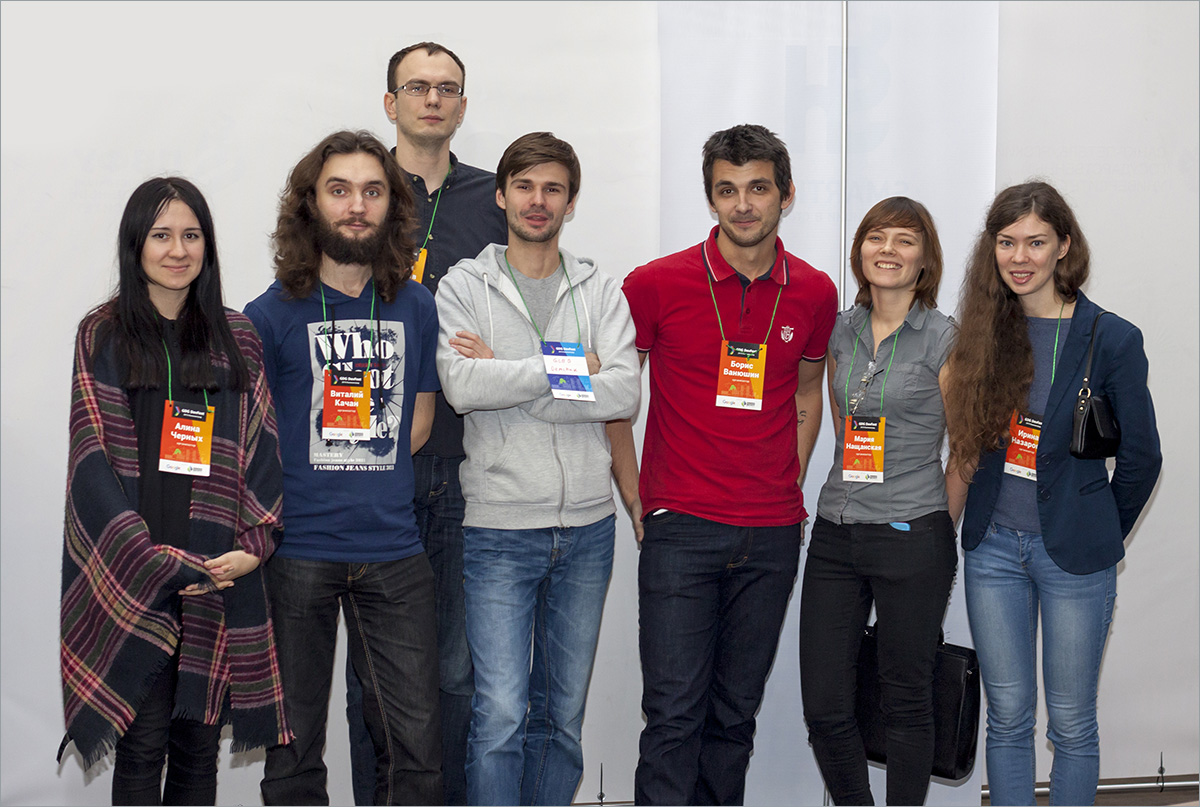
The report is also available on the GDG Kaliningrad Photos page in VK and FB.

At the conference there were about 300 participants, speakers from Kaliningrad, Moscow, St. Petersburg and Voronezh. The organizers were the GDG-community of the city and the Chemical-Biological Institute of the IKBFU Kant, with the active participation of SmartHub .
registration



All participants were waiting for souvenirs from Google and the conference partners.




After welcoming remarks, they passed from the organizers to the speakers. All reports and speaker presentations can be found here .
The first part of the reports
“Experience in designing UI and UX mobile and web applications using live examples”
The first to speak was Kirill Rostovtsev, an interface designer for System Technologies.

Cyril graduated from the British Higher School of Design and the University of Hertfordshire and has been involved in design for more than 10 years.
Theses:
- The design process of the application from drafts to testing;
- How can a designer interact with developers, analysts, sales, support, and everyone else, and why;
- Adaptation of the application for Material Design;
- Is Material Design so good as they say about it;
- In what situations do I need a UI / UX designer, and in which I do not need.


No questions were spoken to the speaker.
“Fetching on Google Play”
The next to take the stage was Sergey Sheleg - Ultimate-Guitar Seniour Android Developer.

Sergey has been developing Android applications for more than 3 years.
Theses of the speech:
- Types of featured on Google Play;
- Requirements for the interface and design of the application;
- Requirements for functionality;
- Work on reviews;
- Quality Review;
- Support for Android Wear and TV.


“Isomorphic java code for Android”
Before the lunch break, we managed to listen to another speaker who flew to us from Moscow - Kirill Danilov.

Kirill is the head of the mobile applications department at amoCRM.
The developer of full-cycle products, has extensive experience in developing mobile applications for different platforms. A fan of hackathon movement, open web technology and wearable technology. Previously an evangelist of the Tizen and Android platforms in Samsung Russia.
Imagine that you need to display large amounts of data in a mobile application. To do this, we need a REST API interface and page-by-page data loading code. But the same can be done by saving all the data in the local database. About how to do this effectively, Cyril and spoke in his report.


Lunch and networking break
After 2 hours of absorbing useful information from the speakers - it's time to eat. :)




Those who did not have time to ask speakers questions during their speech could do this during lunch.




The second part of the reports
“Using the RxJava, Dagger, Retrofit libraries to build the architecture of the Android application”
The second part of the conference was opened by Dmitry Suzdalev - techlide of Android-direction of the company KODE.

Dmitry worked for several years at Parallels (Moscow) as a UI developer, then became interested in programming for Android. He has been doing this for 4 years, he worked with private companies on several applications.
Abstracts:
- use of the Dagger 2 library for modular organization of application components;
- Simple and intuitive access to the Backend API using the Retrofit library;
- use of the RxJava library for flexible task management;
- reducing the number of boilerplate code using Java Annotation Processing technology and various libraries that use it.


“Mobile Vision API on Google Play Services”
The next speaker was Grigory Dzhanelidze, a speaker from St. Petersburg.

Gregory developed applications for Yandex, Classmates, Tele2 and other companies. (fuck!)
Theses:
- Object recognition - what is it and why is it necessary at all;
- An overview of old Android solutions;
- Mobile Vision API - description, comparison and pitfalls.


“DeviceHive: IoT on Android”
After a 20-minute coffee break, we turned to IoT reports.
Nikolay Khabarov flew to us from Voronezh (hello, GDG Voronezh!).

Nikolay is a Senior Embedded Developer at DataArt.
Over 8 years of experience in the development of embedded systems and application software. He is a radio engineer by education. Most of his completed projects included radio devices and digital signal processing algorithms.
Theses:
- IoT in the modern world;
- BLE devices and Android;
- DeviceHive platform;
- connection of BLE devices in the cloud;
- DeviceHive firmware for ESP8266;
- control ESP8266 with Android.


“IoT from Google. Physical Web. Platform beacon »
And another Muscovite, Zviad Kardava, finished the conference.

Zviad works at RusBITech as a Software Engineer, writes a Ph.D. thesis at Moscow State University of Technology. N.E. Bauman.
Since 2012, he has been engaged in research and development in the field of distributed systems, high performance middleware and Industrial IoT. These are mainly technologies such as HLA (IEEE 1516-2010) and OMG Data Distribution Service, as well as everything related to them, for example MQTT, which is very often used in consumer IoT.

Zviad brought along a visual material of his speech - beacon.
Abstracts:
- IoT from Google;
- The concept of Physical Web. Why is this important and what does it give?
- Beacon platform and protocol specification Edystone (Eddystone format);
- Proximity Beacon API;
- Nearby Messages API;
- Places API.


Completion
In conclusion, DevFest in Kaliningrad - thanks and a small report on the future plans of the GDG-community of the city.




The report is also available on the GDG Kaliningrad Photos page in VK and FB.
